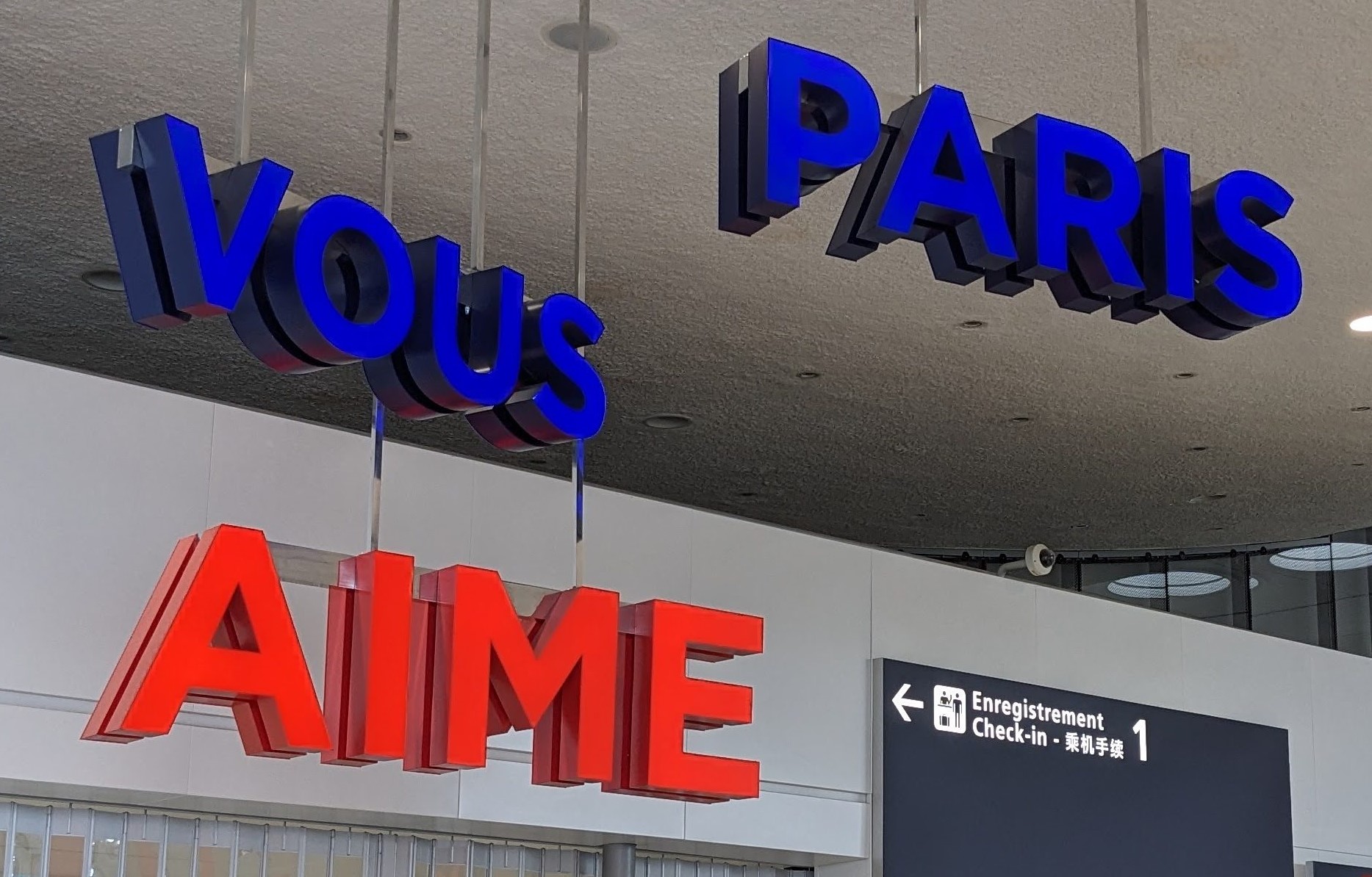
Our sentiments, exactly, on leaving Paris
With a morning flight on our schedule, we had to rise early despite having gone to bed after midnight. We met Pat for breakfast about 7:15 a.m. and then embarked on the now-familiar walk and shuttle ride from the hotel to the terminal at Charles deGaulle Airport. That ten-minute journey seemed short in comparison to the long hike we had to take through Terminal 2B before we finally came to the check-in area for Norwegian Air, located at the far end.
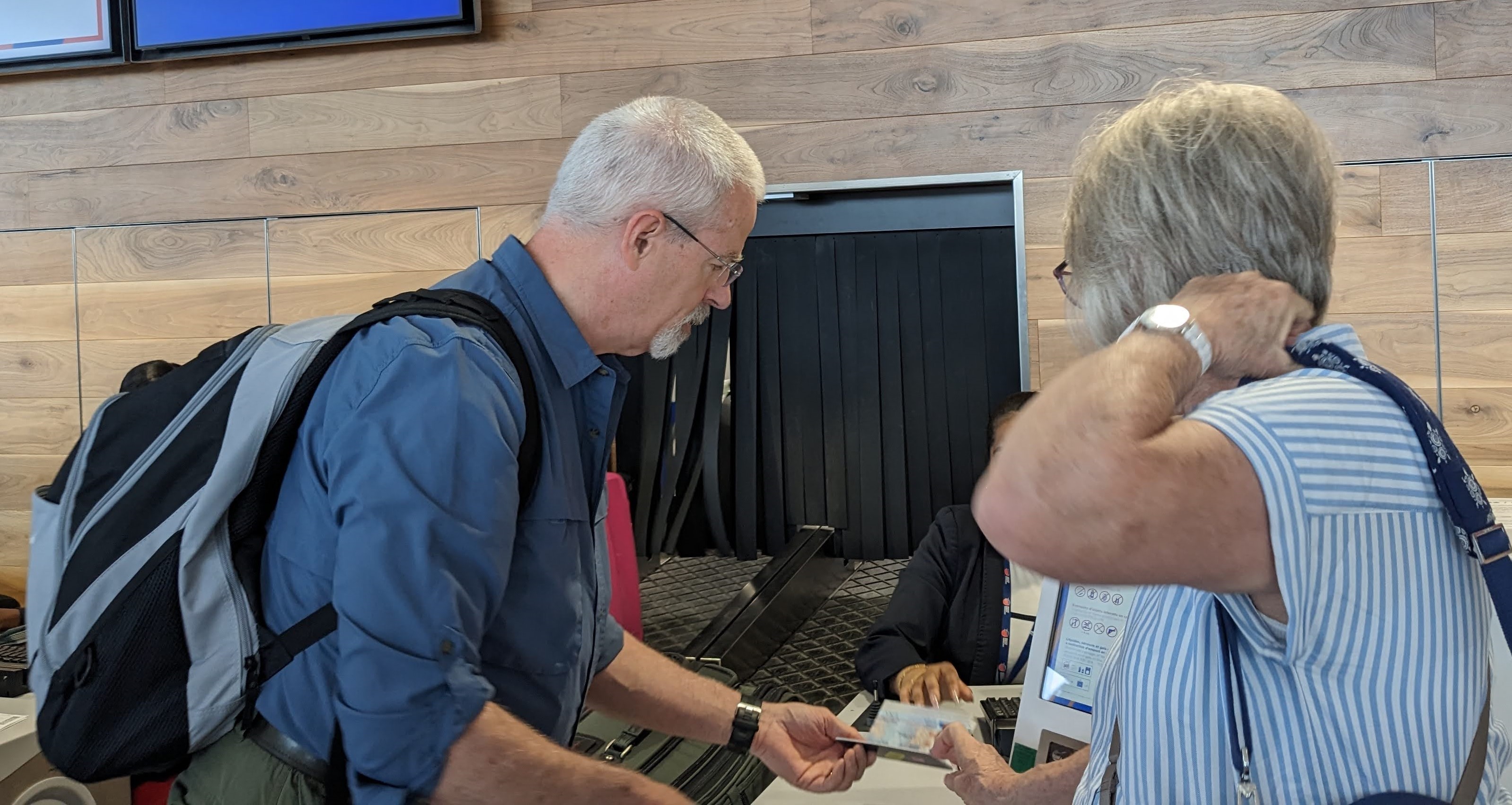
Michael and Pat checking in with Norwegian Air
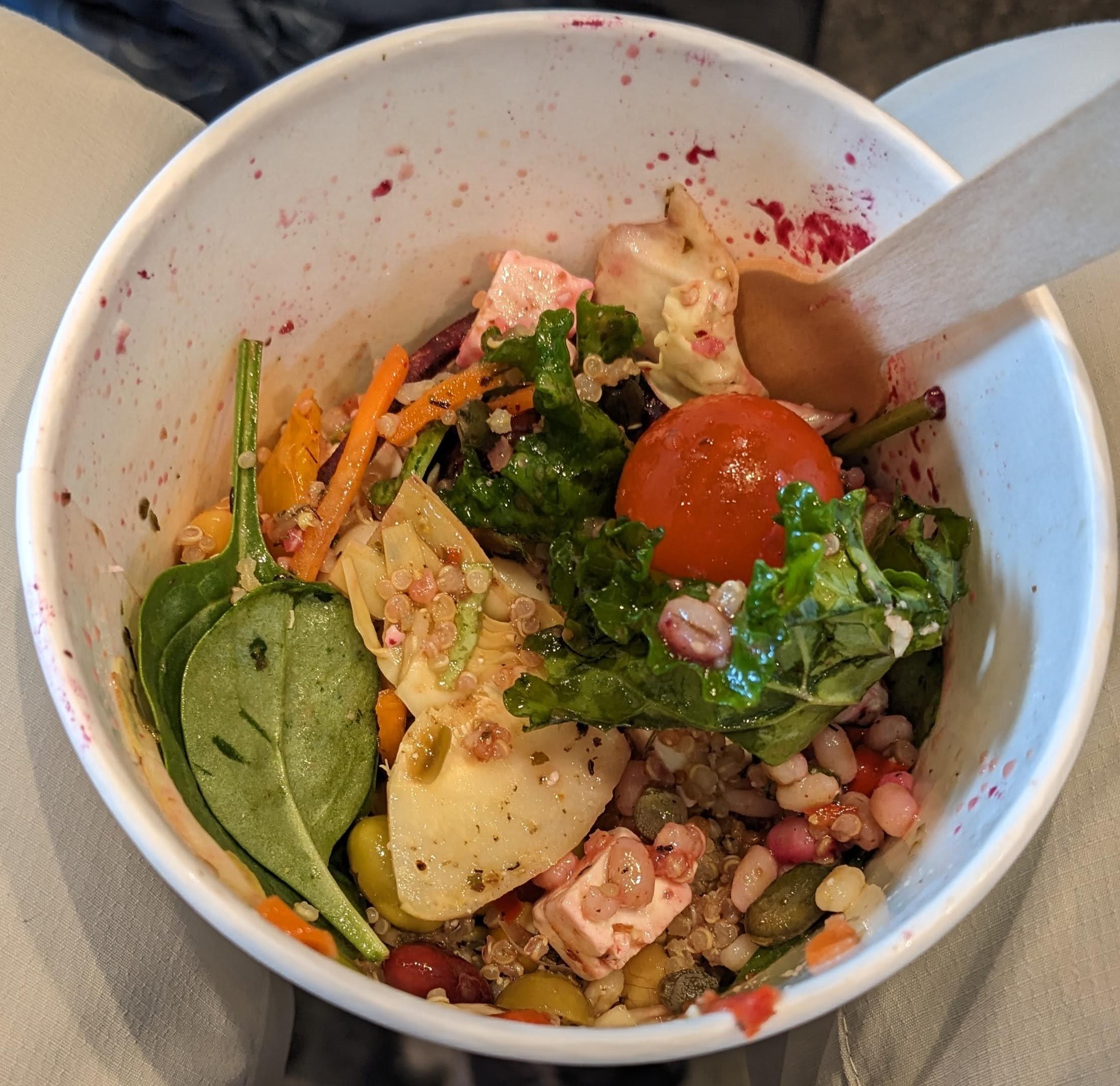
A partially-consumed salad from Haven’s build-your-own bar
Checking in was easy once we found the desk, and we departed as scheduled at 10:20 a.m. Our exit-row seats provided enough leg-room to satisfy even Michael, but that was our only comfort; the flight attendants offered no complimentary snacks or drinks. We arrived in Oslo at 12:15 p.m. as scheduled, and were amazed that the “Immigration” security check consisted of a single agent who glanced briefly at our passports as we deboarded the plane. Welcome to Norway! Before picking up our luggage, we decided to stop at Haven’s build-your-own salad bar for a healthy, satisfying but expensive lunch. (We would soon discover that everything in this country is expensive. Welcome to Norway!)
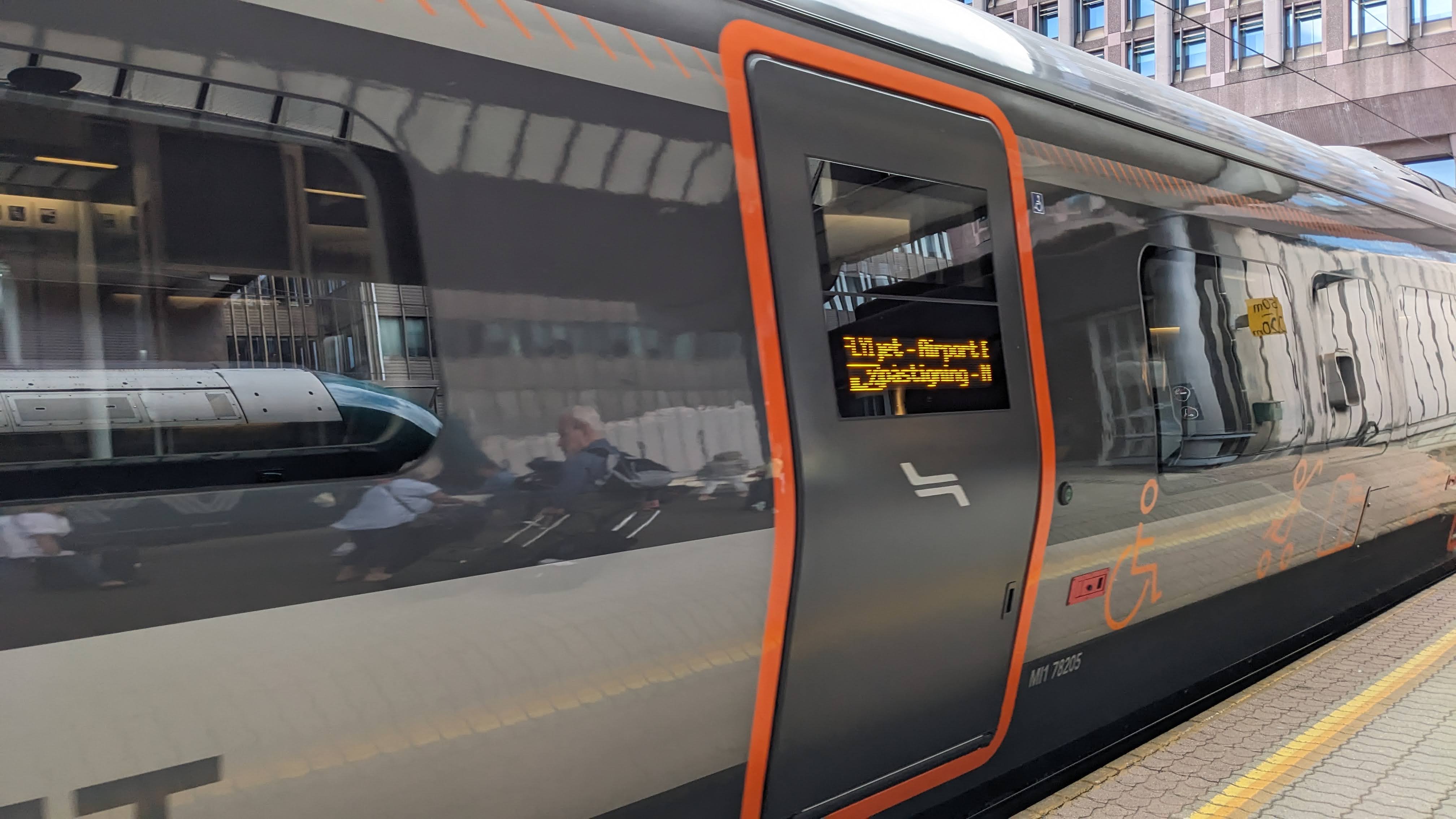
Flytoget train
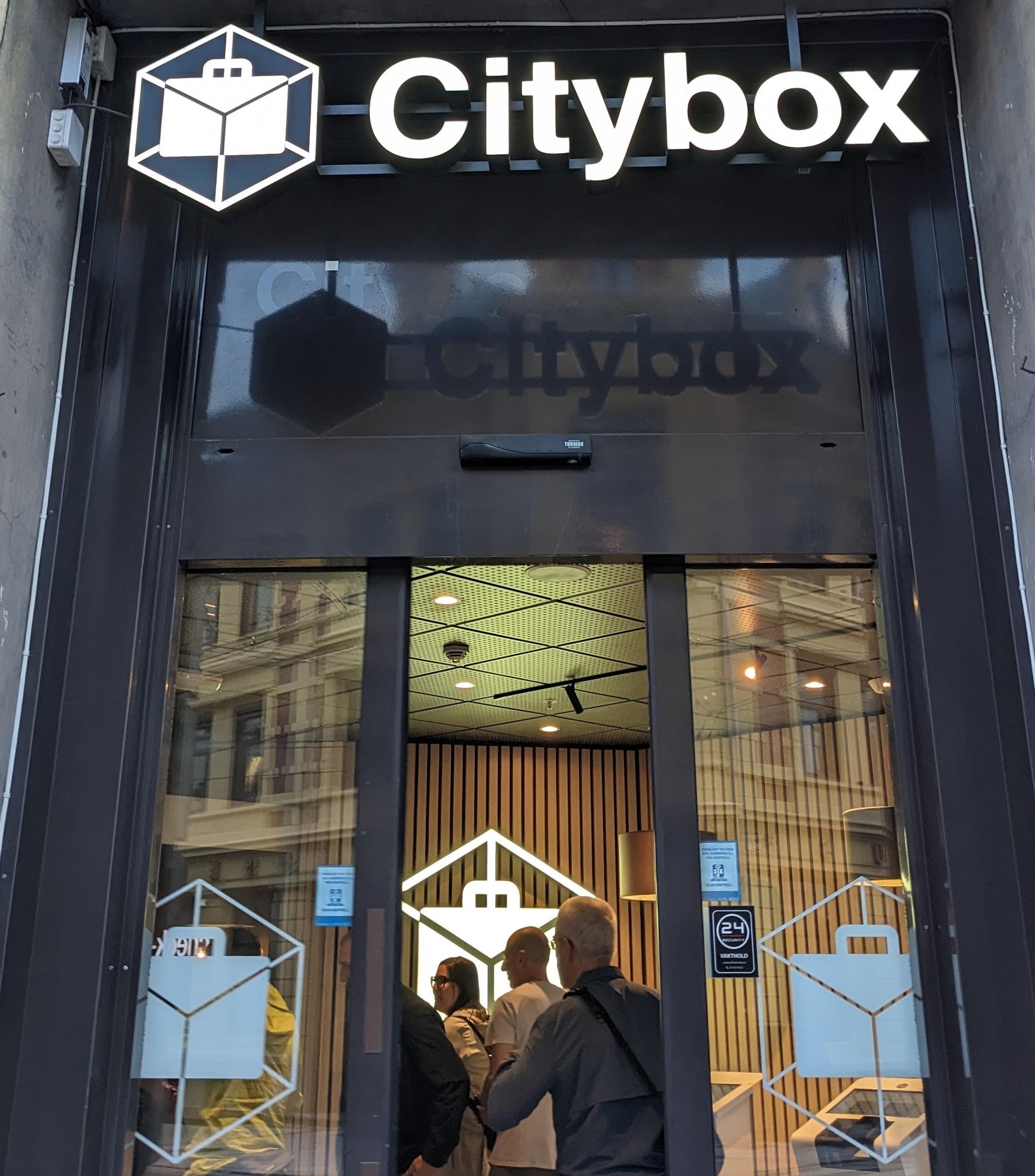
Citybox Oslo
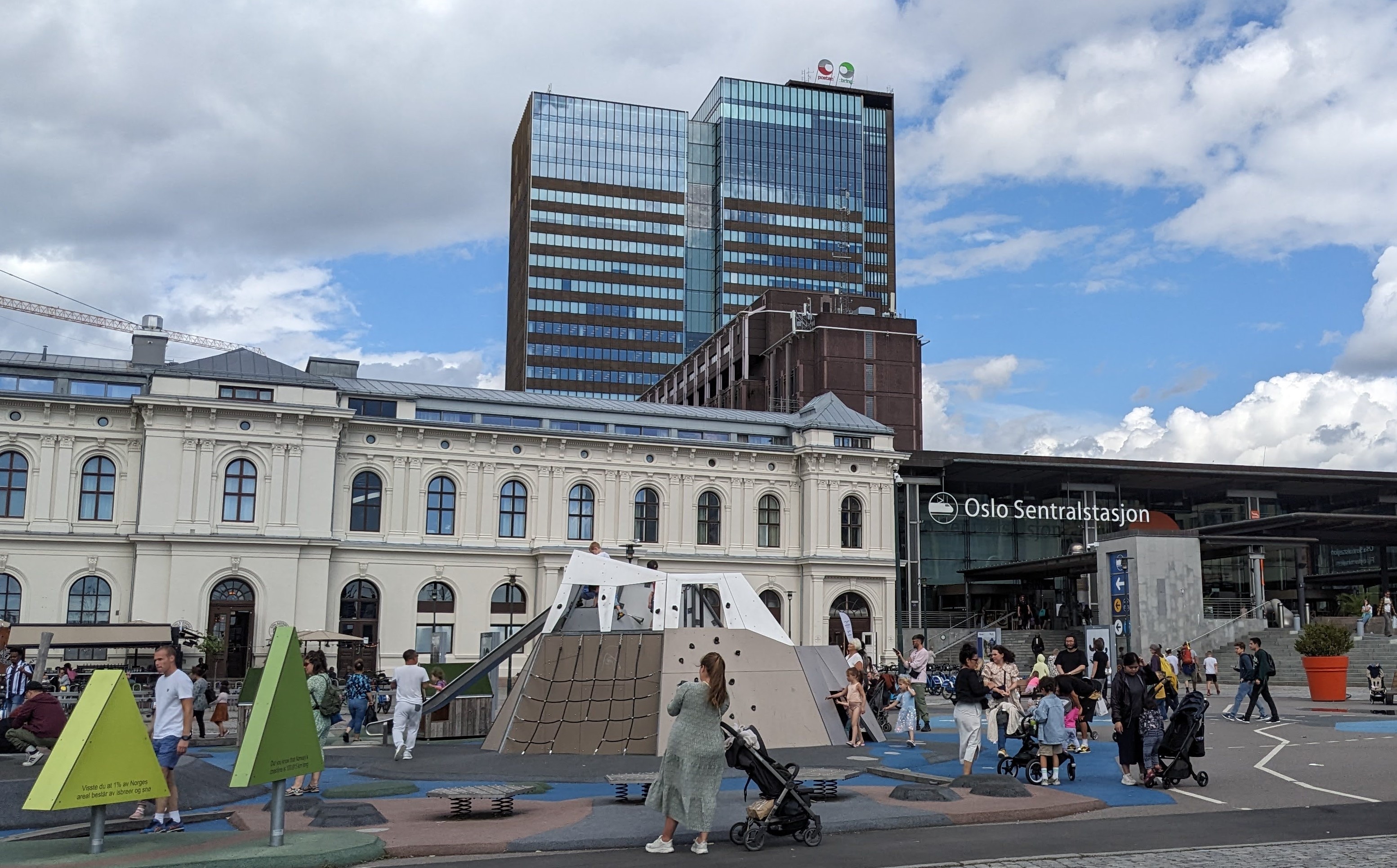
City square and playground outside Oslo’s central transit station

Citybox’s central lounge
After retrieving our luggage, we followed the signs to Flytoget, the railway that connects the airport with central Oslo, 26 miles away. The ride took 40 minutes, but the train was clean and comfortable, and ran with the kind of efficiency we’ve come to expect from northern European transit lines.
From Oslo’s bustling Sentralstasjon (Central Station), we had a short walk to Citybox, a budget hotel that looked deceptively small from the street. Once we got past the self-serve check-in kiosks in the lobby, however, the place opened up into a multi-floored maze of spacious communal lounges surrounded by small, private bedrooms with en-suite baths. In contrast with the Holiday Inn Express at CDG in Paris, Citybox’s clientele seemed to consist entirely of families and tourists. We saw no one dressed in business attire nor anyone who appeared to be in a hurry; rather, people in T-shirts were lounging with their laptops, playing ping pong, or gathering around tables to eat meals they had just warmed up in a communal microwave.
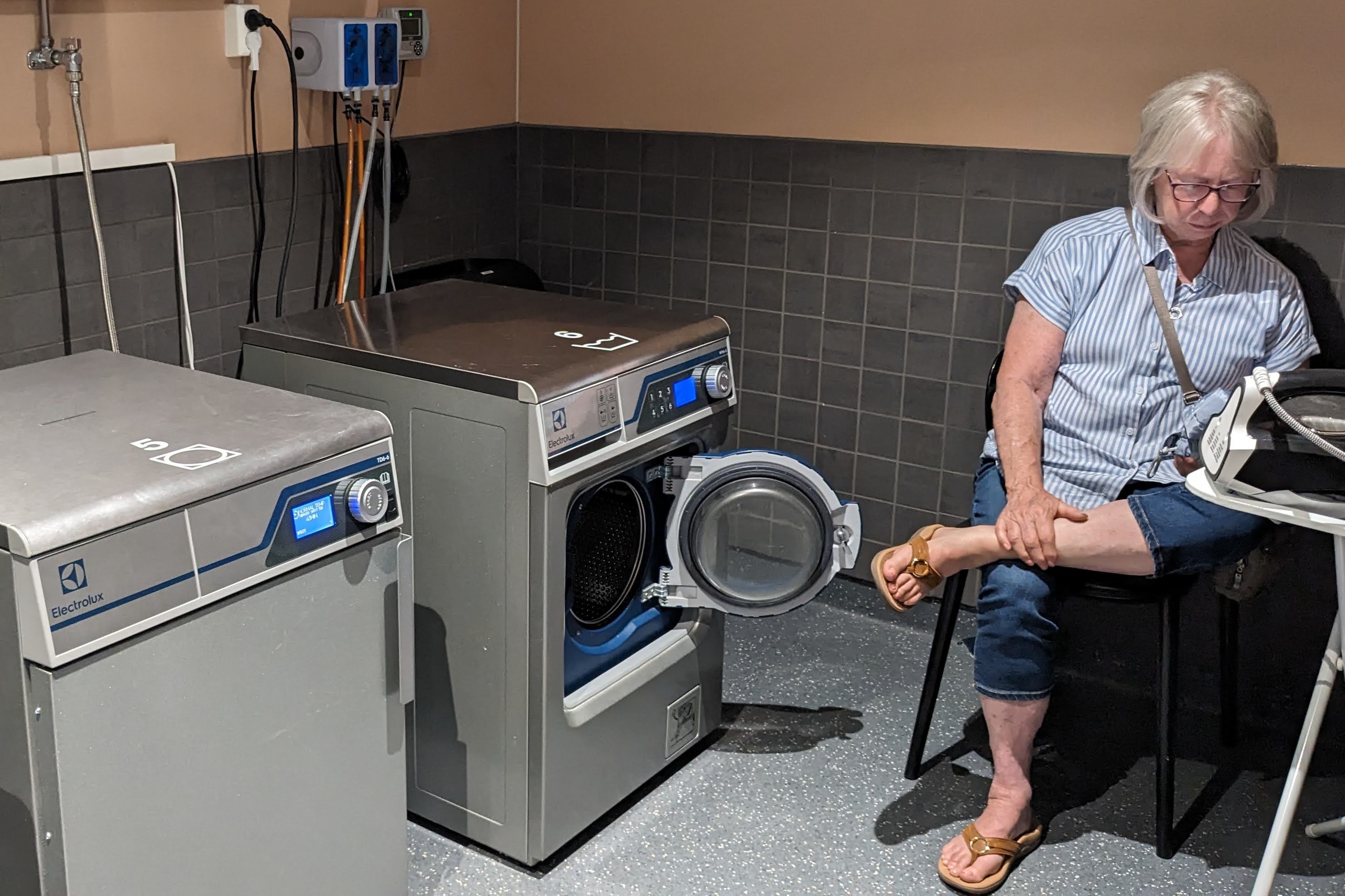
Pat guarding the laundry
Our primary objective of the afternoon was to do laundry, and—anticipating this need before he made our reservations—Michael had ascertained that the hotel offered self-service washers and dryers. Pat was happy to sit and monitor the machines because she had a book to read, so Nancy and Michael took advantage of the opportunity to go out and get the lay of the land. Our first task was to return to the transit station, find the long-term storage lockers, and determine how many we would need to accommodate the big bags we didn’t want to drag around during our “Norway in a Nutshell” tour.
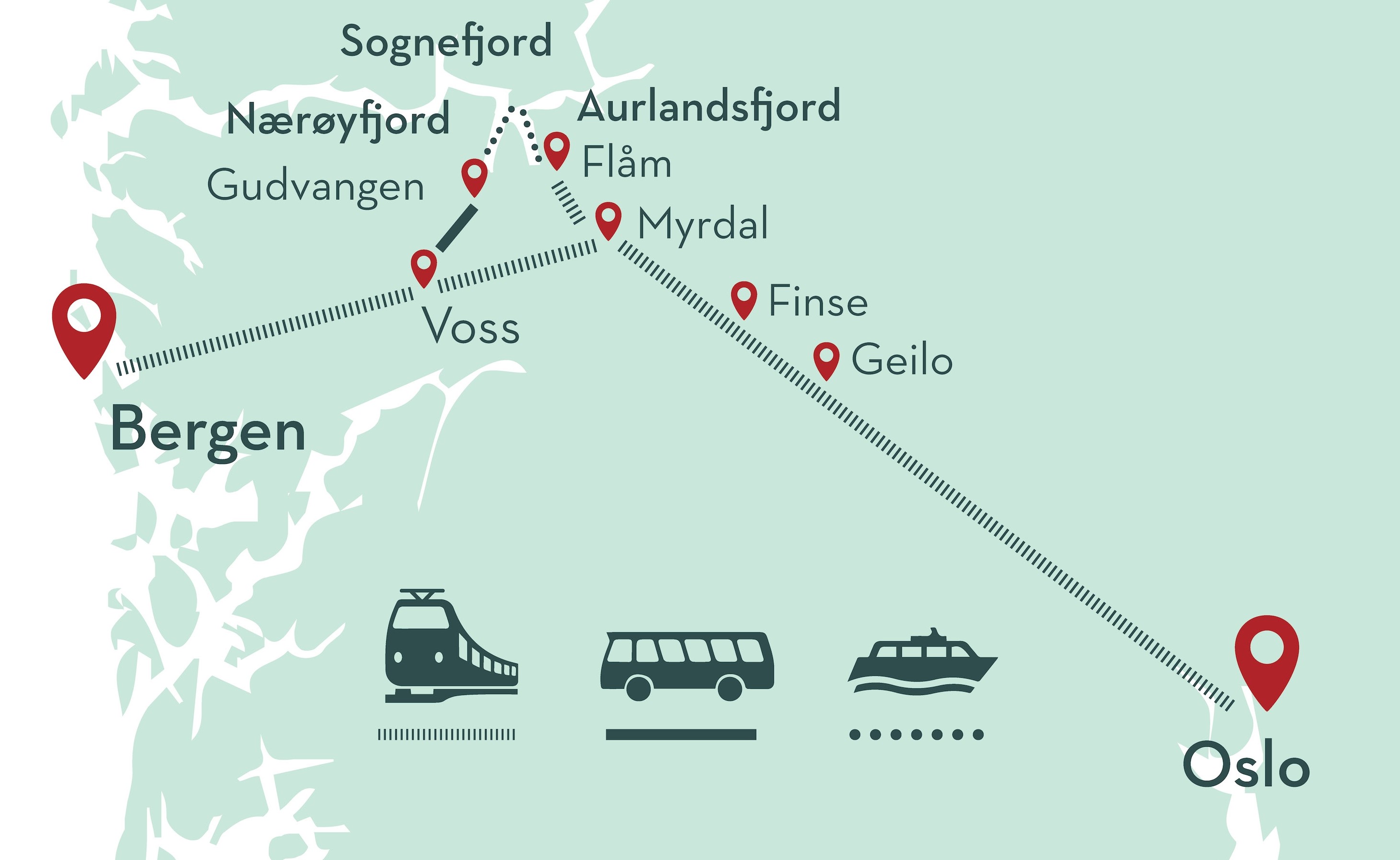
Norway in a Nutshell’s set route
“Norway in a Nutshell” is an actual thing. In 1982, FjordTours identified a need for flexible travel based on individual tourists’ needs and desires, so instead of trying to create a one-size-fits-all tour, they simply identified the most popular tourist destinations and provided various means of transportation between them along a set route. Travelers can then decide how long they want to spend at each stop along that route, making their own arrangements for lodging, meals, and extra excursions. Basically, “Norway in a Nutshell” works like an on-off shuttle through southern Norway.
Our plan was to take the minimum amount of time needed to cover the route: two days. We did not want to be schlepping a lot of luggage from train to bus to boat, so each of us would carry only what we needed for the two-day tour in an overnight bag. We were pleased to discover that all our big luggage—including Pat’s–could fit into one large locker at the train station.
With that business completed, we went hunting for the place Michael had identified as our best option for dinner: an Italian restaurant called Baltazar. It was supposed to be located near the Domkirke, Norway’s national cathedral. Typed into Google Maps, the address led us to a large brick arcade that in an earlier era must have been part of the cathedral complex, but now it was occupied by busy shops and restaurants. Baltazar, however, did not seem to be among them. We spent several minutes walking in and around the arcade without seeing any indication that Baltazar existed. We did see some empty storefronts, however, so Michael suspected that the Italian restaurant had folded since he had seen it listed on Tripadvisor. Restaurant Option B had been a distant second, and none of the other restaurants we had passed during the afternoon looked very interesting. Frustrated, we walked back to the hotel.
Returning to Citybox when we did was a good idea because Pat needed help in the laundry room. The machines were not user-friendly, and it was hard for her to determine which ones actually worked. Nor could she determine exactly how much it cost to run each load because the machines took only credit cards and did not post the accumulating charges. (When we finally saw the monthly statement, we were relieved to find that we actually had gotten a good deal, not paying for all the minutes we had used.) On the positive side, Pat had had some interesting conversations with other laundry-room patrons, notably a Latter-day Saint couple from Atlanta. (A BYU sweatshirt had tipped her off.)
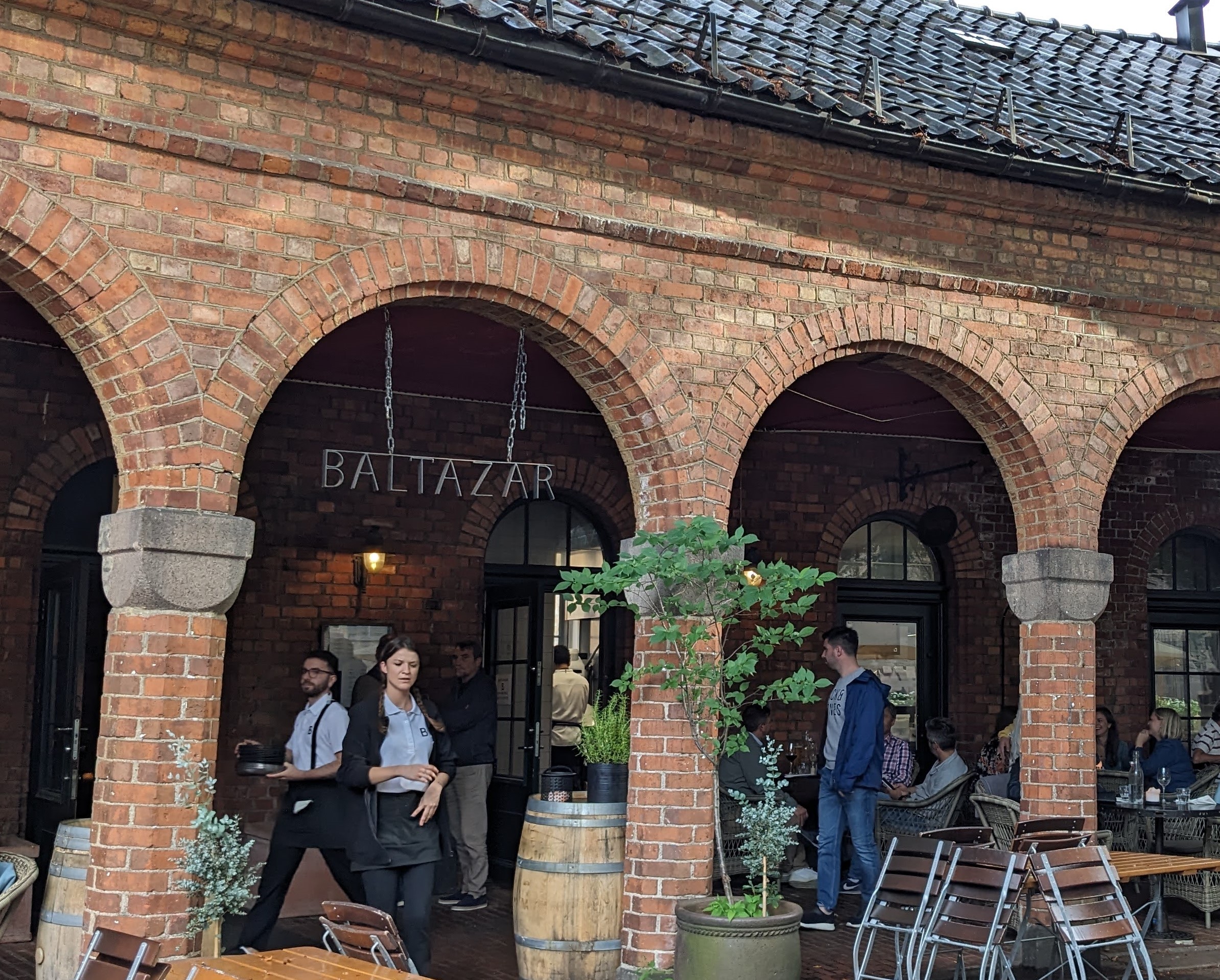
Baltazar in the courtyard
While Michael was helping Pat iron out the laundry issues, Nancy set about trying to determine why we had not been able to find our first-choice restaurant. Satisfied Baltazar patrons had posted pictures of their meals there within the past two weeks, so it had to exist—but where? Nancy wouldn’t allow us to give up the search, so, ready for dinner, all three of us walked back to the arcade near the Domkirke. Google Maps indicated “You have arrived,” but Baltazar remained invisible to our eyes. After stopping several people to ask if they knew where Baltazar was, we finally found a man who said “Yes,” and then explained that the entrance to the restaurant was on the inside of the curved arcade rather than on the side facing the street. When we walked around the end of the arcade to the other side, we found a large courtyard where several tables were set up for dining al fresco, and behind them an inconspicuous sign that said “Baltazar.” Eureka!
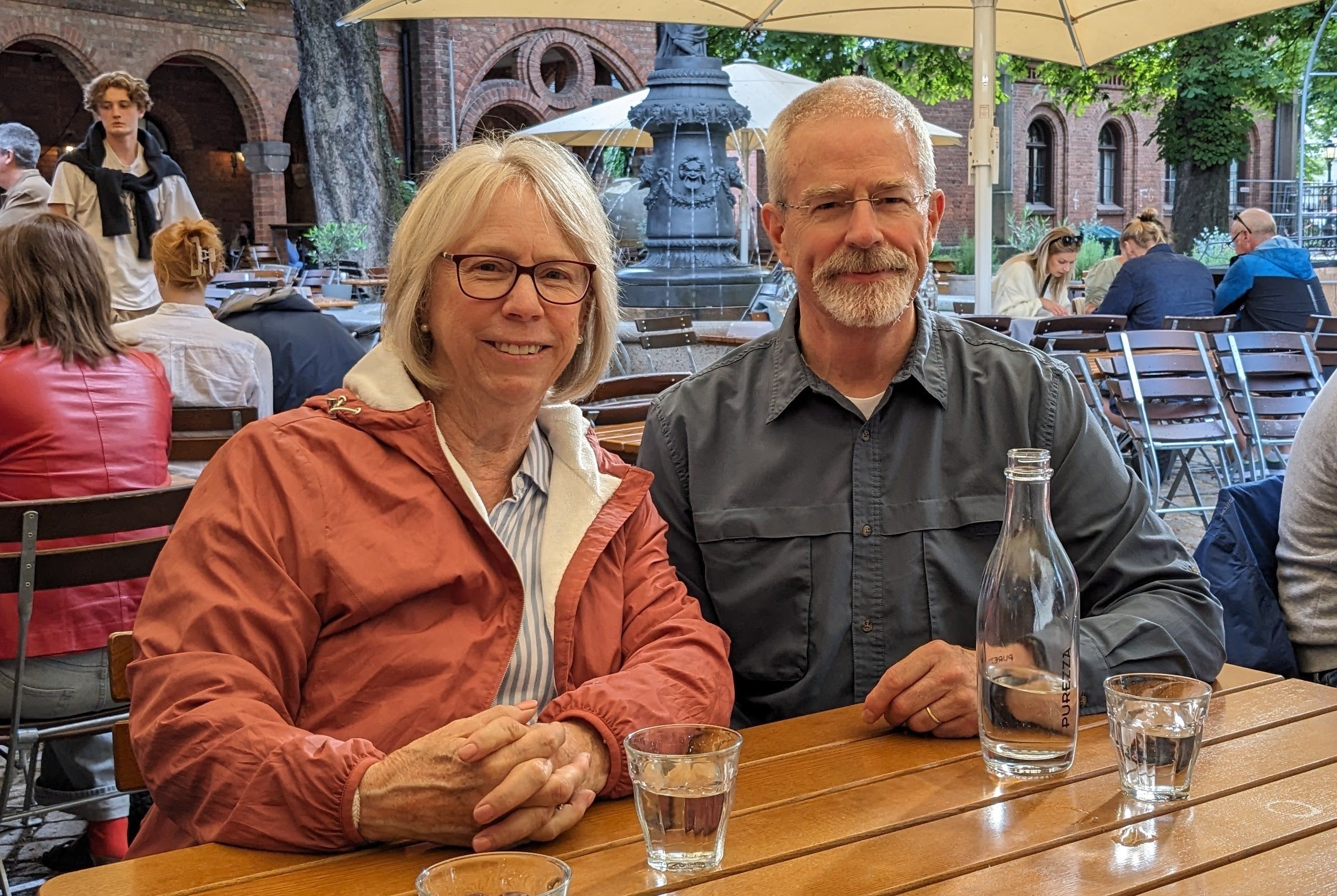
Pat and Michael awaiting their order
That evening, dining al fresco meant dining with occasional rain showers, but the host led us to a table under a big umbrella and made sure the chairs were dry before we sat down. We’re glad we persevered in our search for the restaurant because the food was excellent.
As we enjoyed our dinner, we tried to figure out what language the two couples at the table next to us were speaking. It was not one that sounded even vaguely familiar to any of us, but we guessed that it was eastern European—Armenian, maybe? Curiosity getting the better of him, Michael had to inquire before we left. It turned out that the other diners were from Georgia—not the state where the LDS couple we had met earlier were from, but the country of Georgia. And no wonder we had trouble identifying the language; we learned that Georgian is one of a very small family of languages indigenous to the South Caucasus and spoken by relatively few outside that region.
Dinner at Baltazar
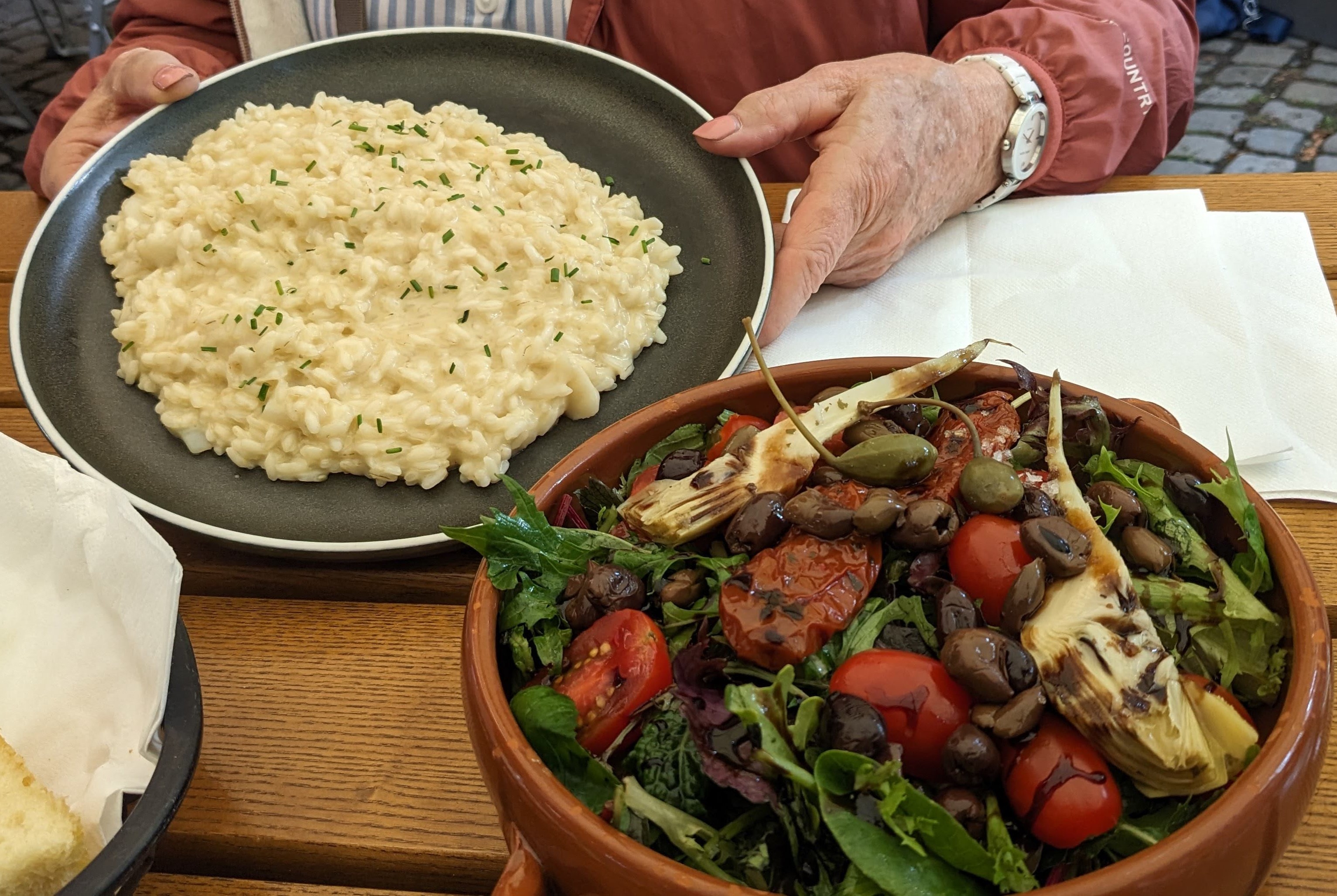 Pat’s risotto and Greek salad |
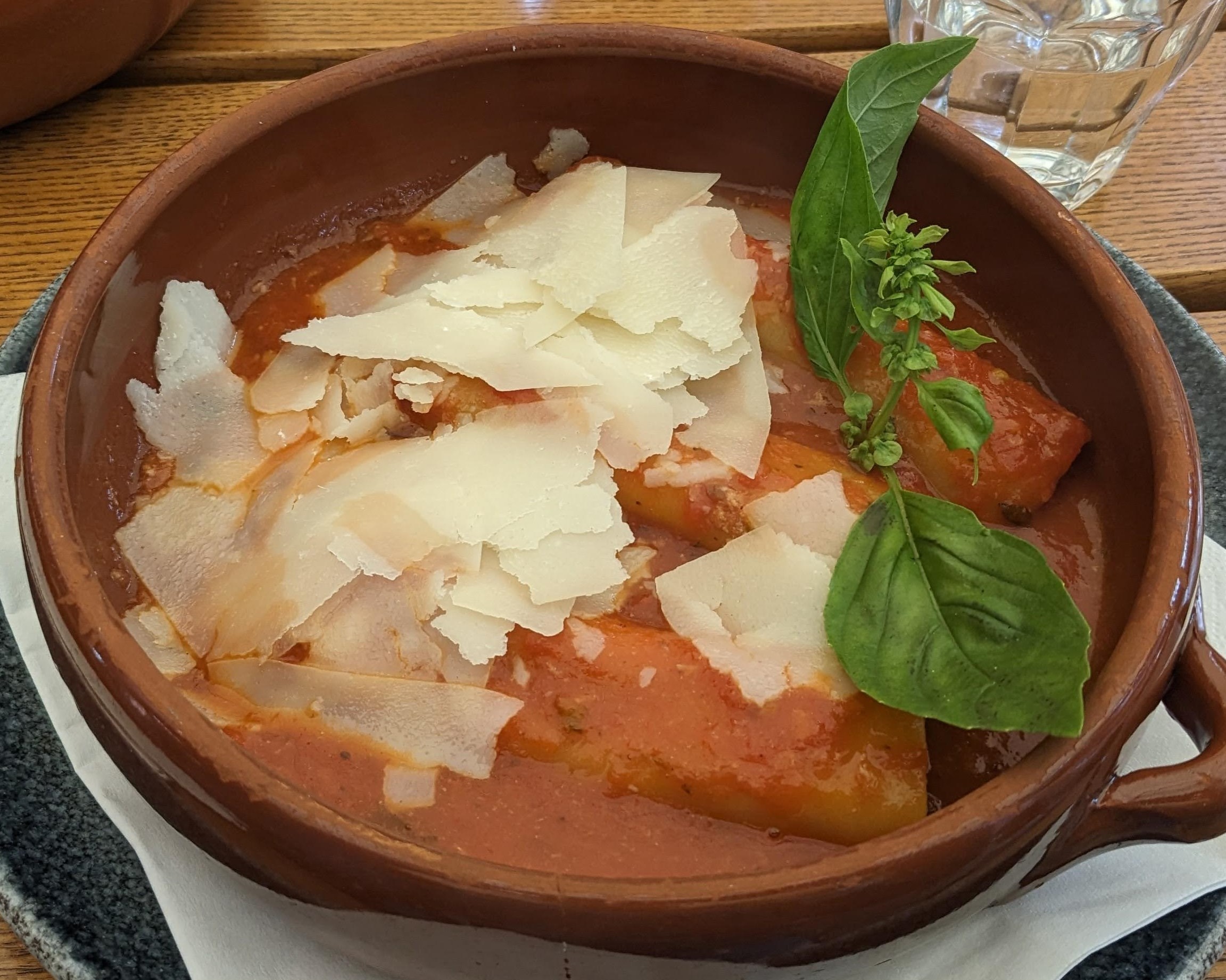 Nancy’s ricotta cannelloni with classic ragu |
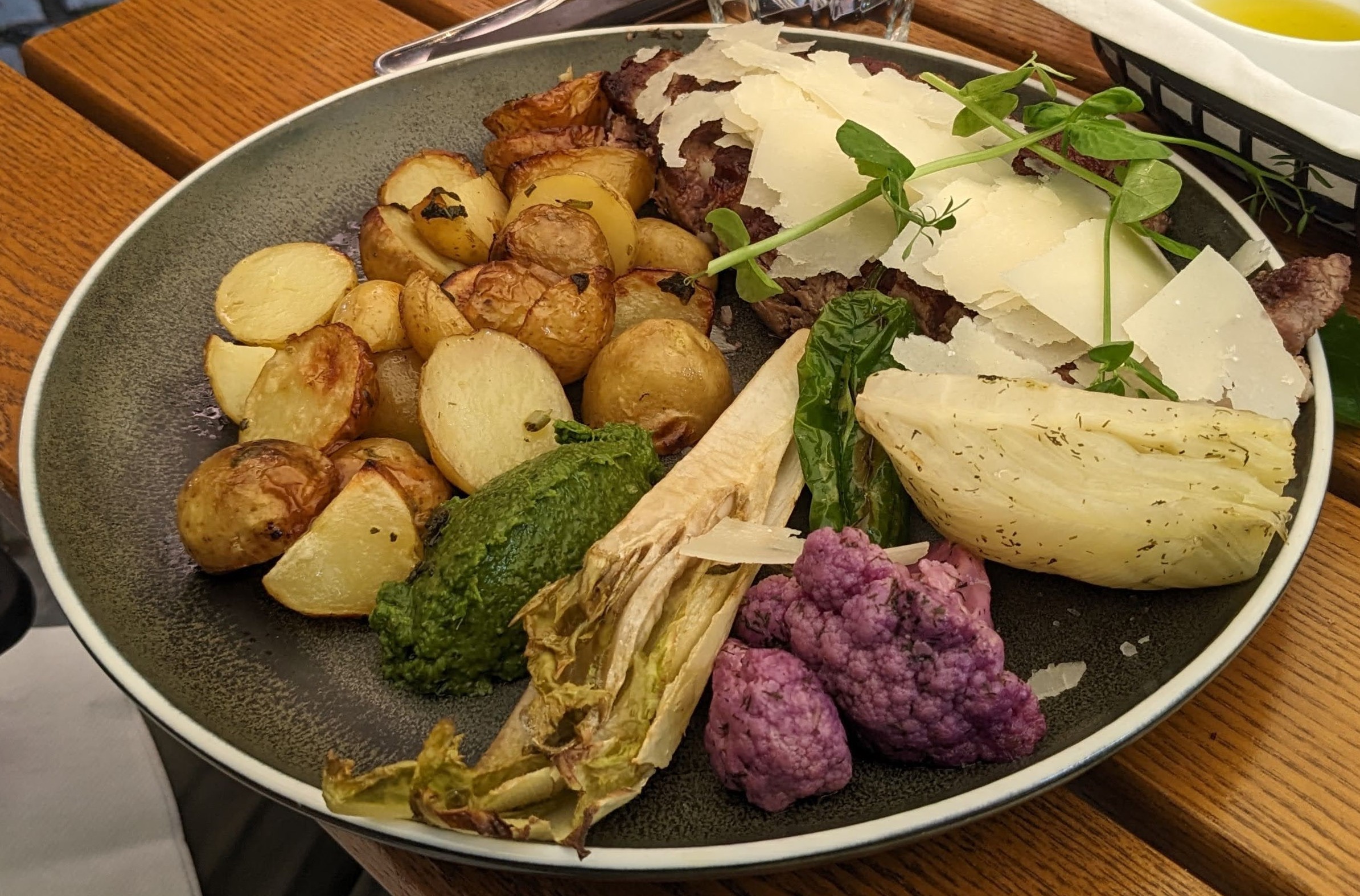 Michael’s ribeye with shaved parmesan and roasted vegetables |
By the time we had finished our gelato and paid for the meal, Pat was ready to turn in for the night, but Michael and Nancy decided to explore more of the city, taking advantage of the prolonged daylight hours offered by our proximity to the Arctic Circle. Consulting sightseeing recommendations from several Oslo websites before we arrived, Michael had patched together a walking tour that basically followed the pedestrians-only Karl Johans Gate (gate is Norwegian for street). Most of the recommended sites were closed for the night; the only place we could actually go inside was the Grand Café. Located on the ground floor of the Grand Hotel, this had been the center of social life for Scandinavia’s literati and artistic elite since it opened in 1874; playwright Henrik Ibsen (A Doll’s House) and painter Edvard Munch (The Scream) were regular patrons. In 1928, Per Krohg, another Norwegian artist who is best known for painting the peace mural in the United Nations Security Council Chamber, created the mural on the back wall of the café. It depicts the interior as it might have appeared in its heyday, with its illustrious clientele. Munch was said to have been the best-looking man in Norway in his day, but if Krohg’s depiction is true-to-life, other Norwegian men must have been rather homely.
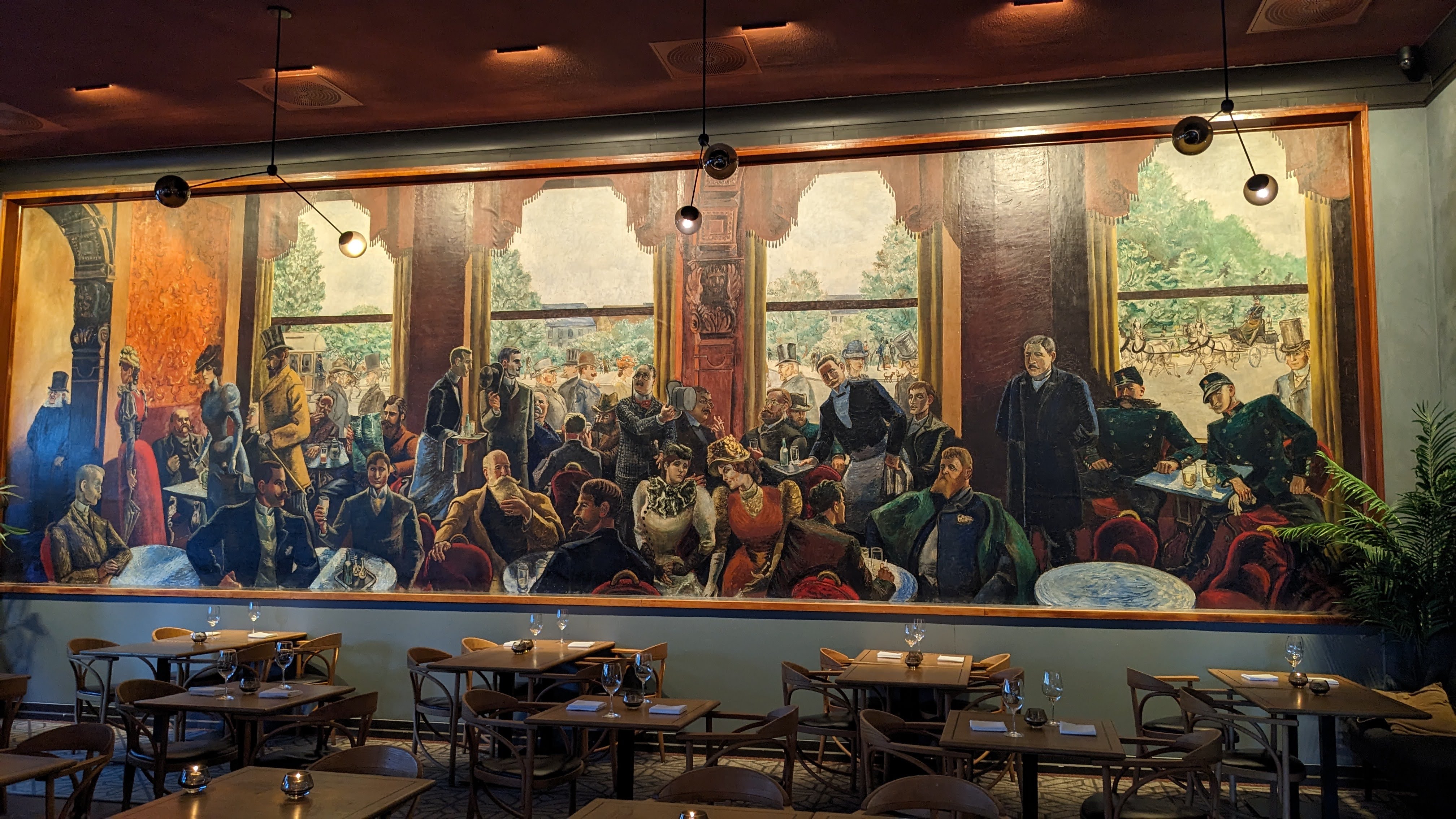
Krohg’s mural in the Grand Café. Ibsen is at the far left, wearing a top hat; Munch is seated in the second window from the right, behind and to the right of the waiter.
Henrik Ibsen’s presence as a cultural icon is noted at more points along Karl Johans Gate: at Oslo University, the National Theatre, and the nearby Ibsen Museum and Theatre, located in the spacious home where the playwright died in 1906. His last play, When We Dead Awaken—a somber reflection on love, death, and creativity—was written there.
Oslo Central City
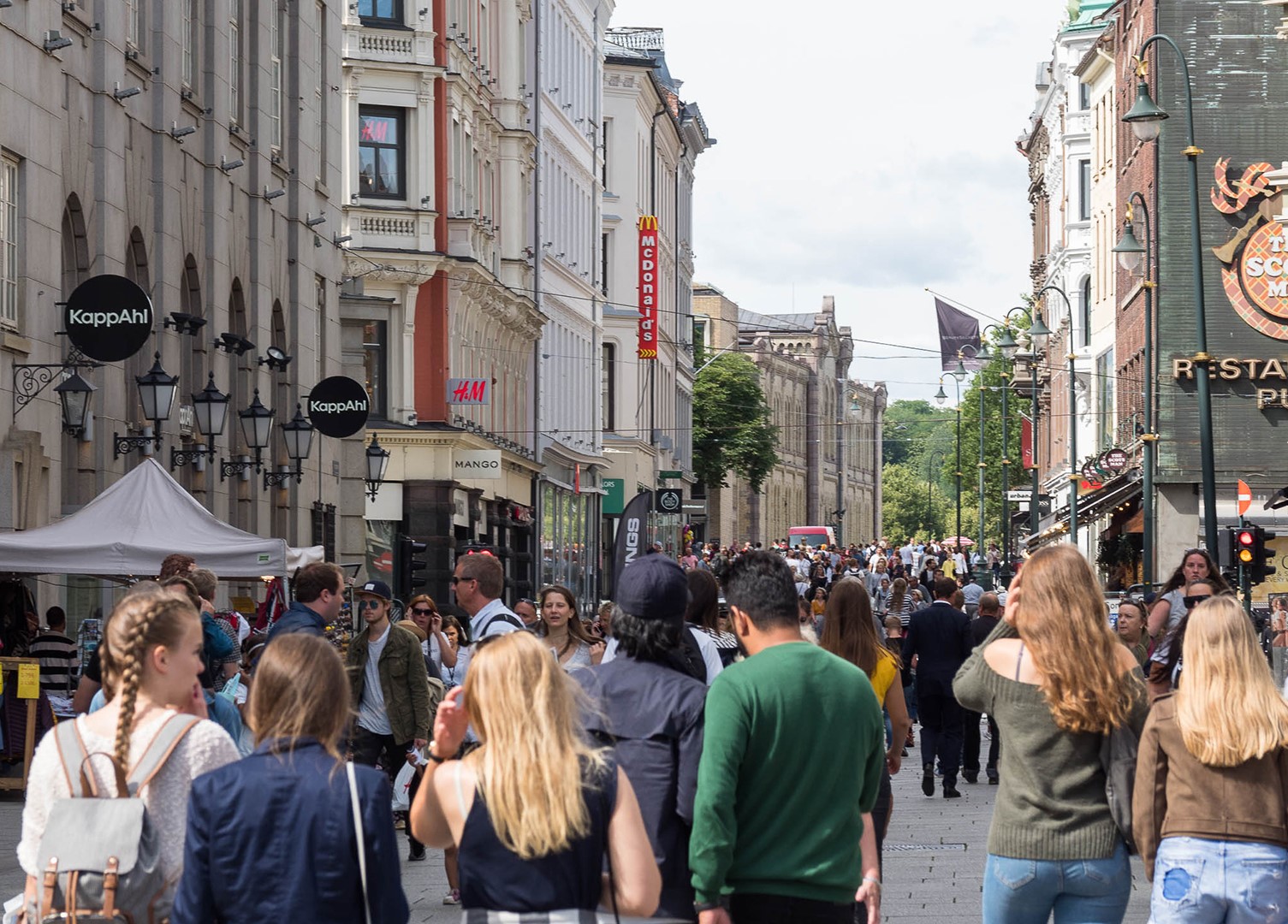 Karl Johans Gate |
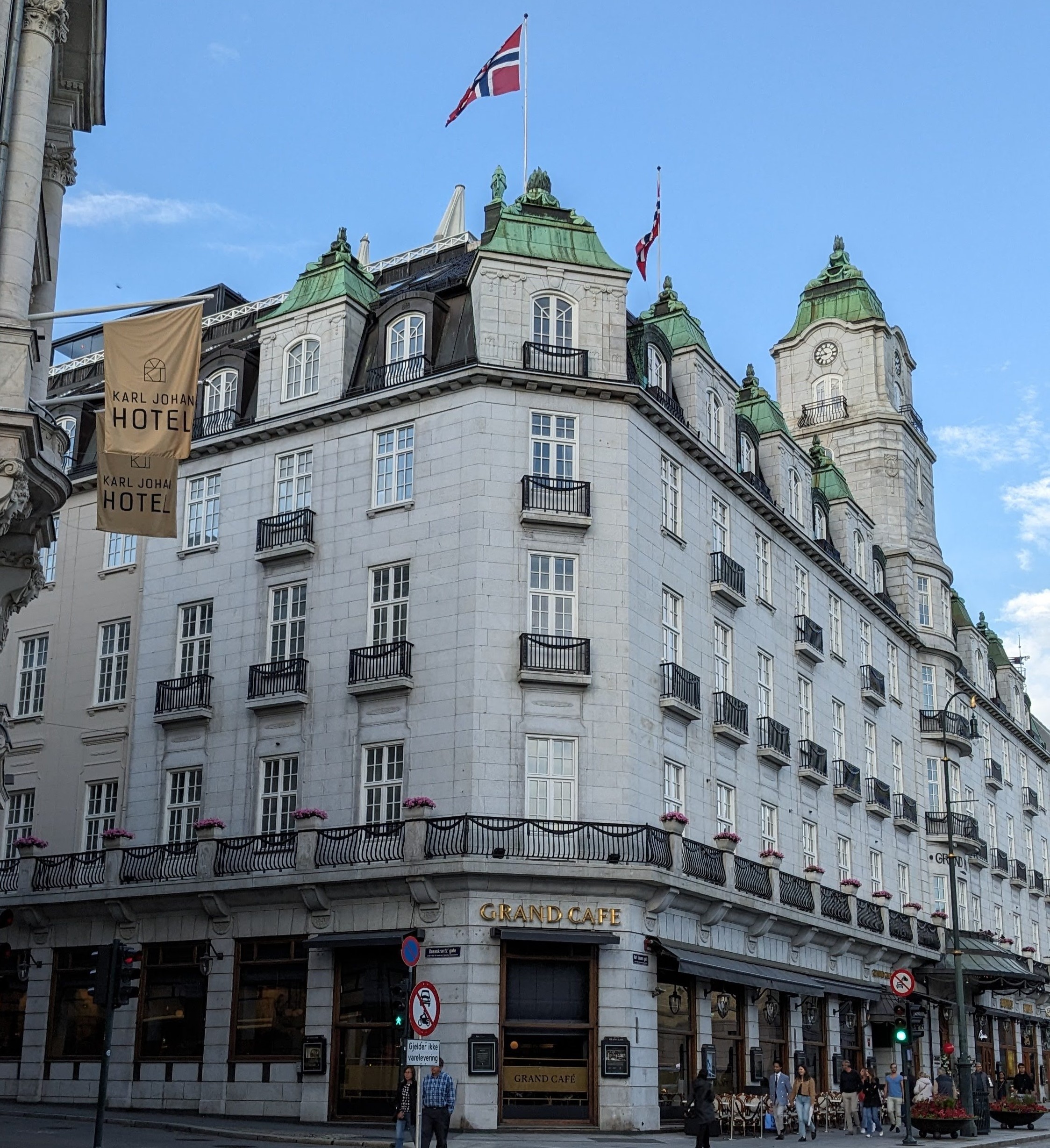 Grand Hotel and Café |
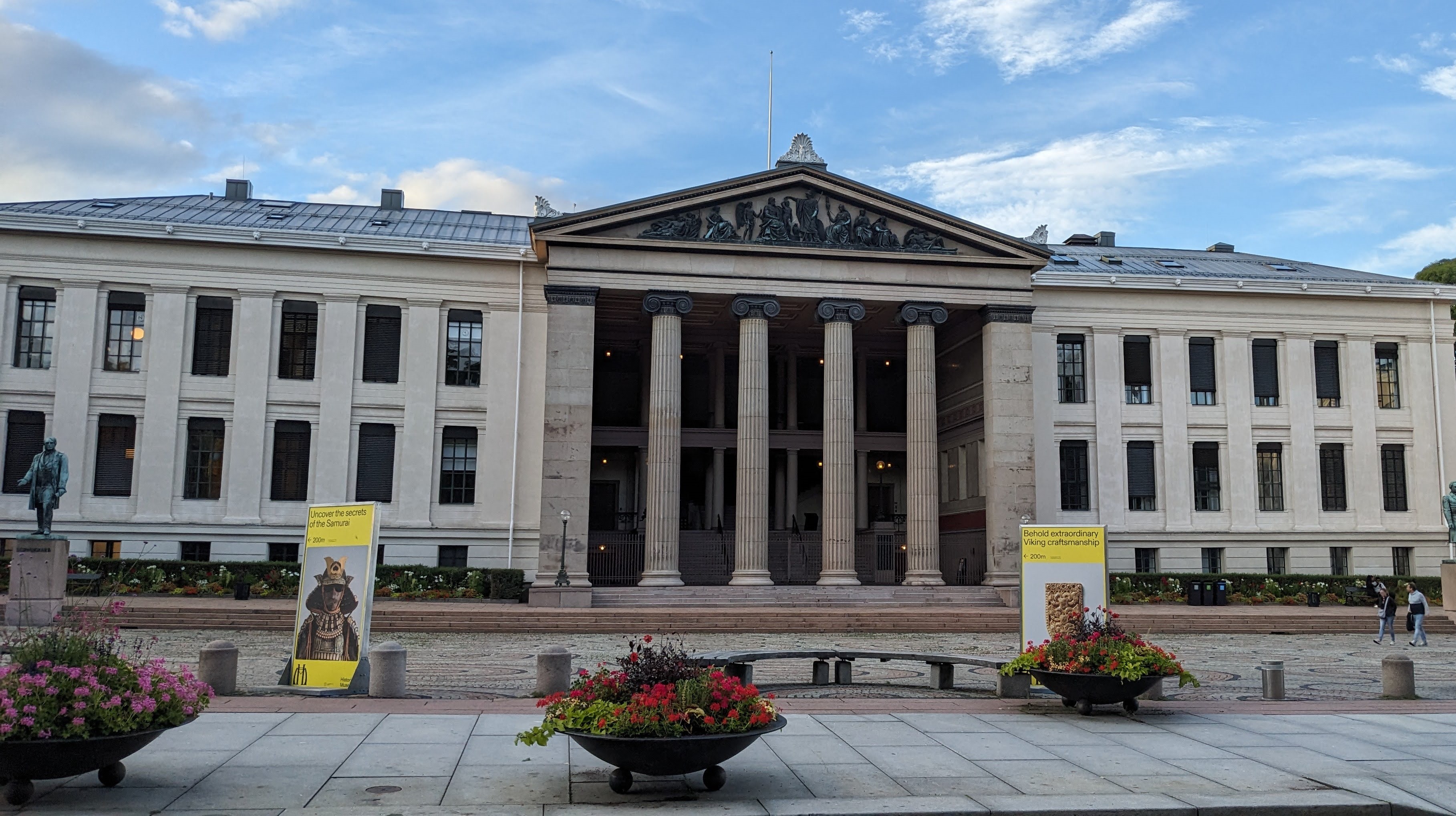 Oslo University |
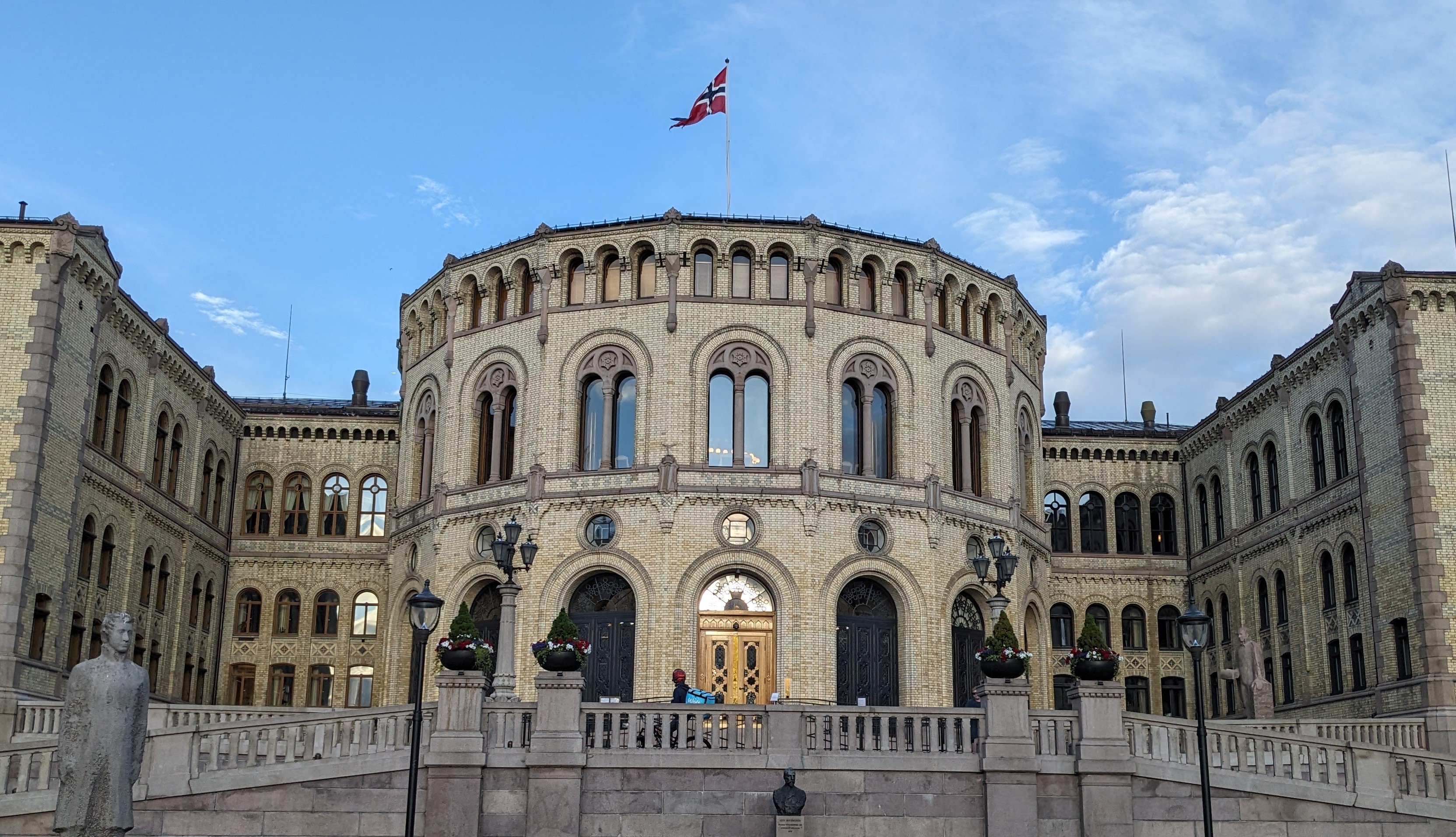 Parliament |
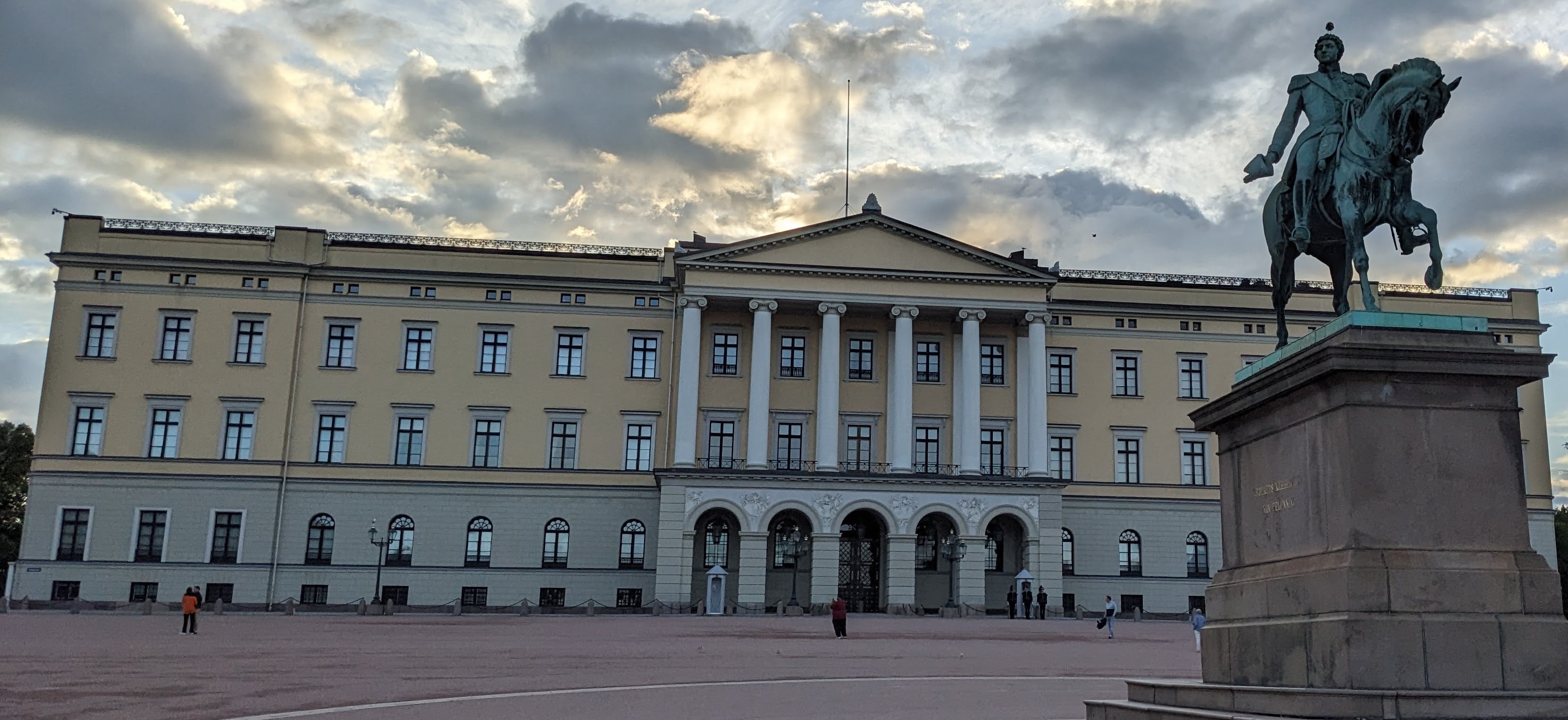 A statue of King Karl Johan is at the center of the square in front of the Royal Palace. Inscriptions on the base state: “The Norwegian people erected this monument,” and “The love of the people is my reward.” |
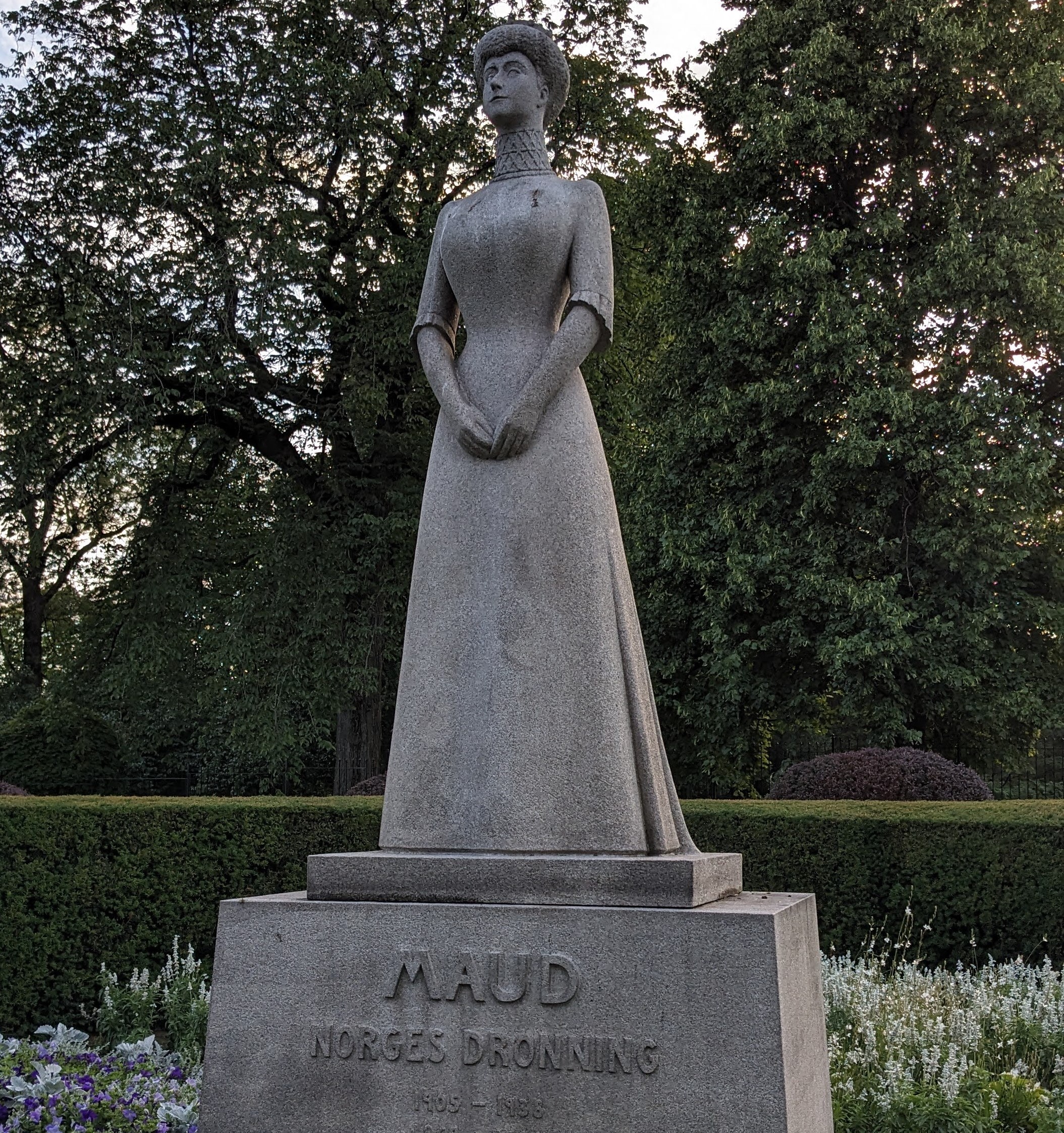 Queen Maud (1869-1938). Sculpture by Ada Madsen |
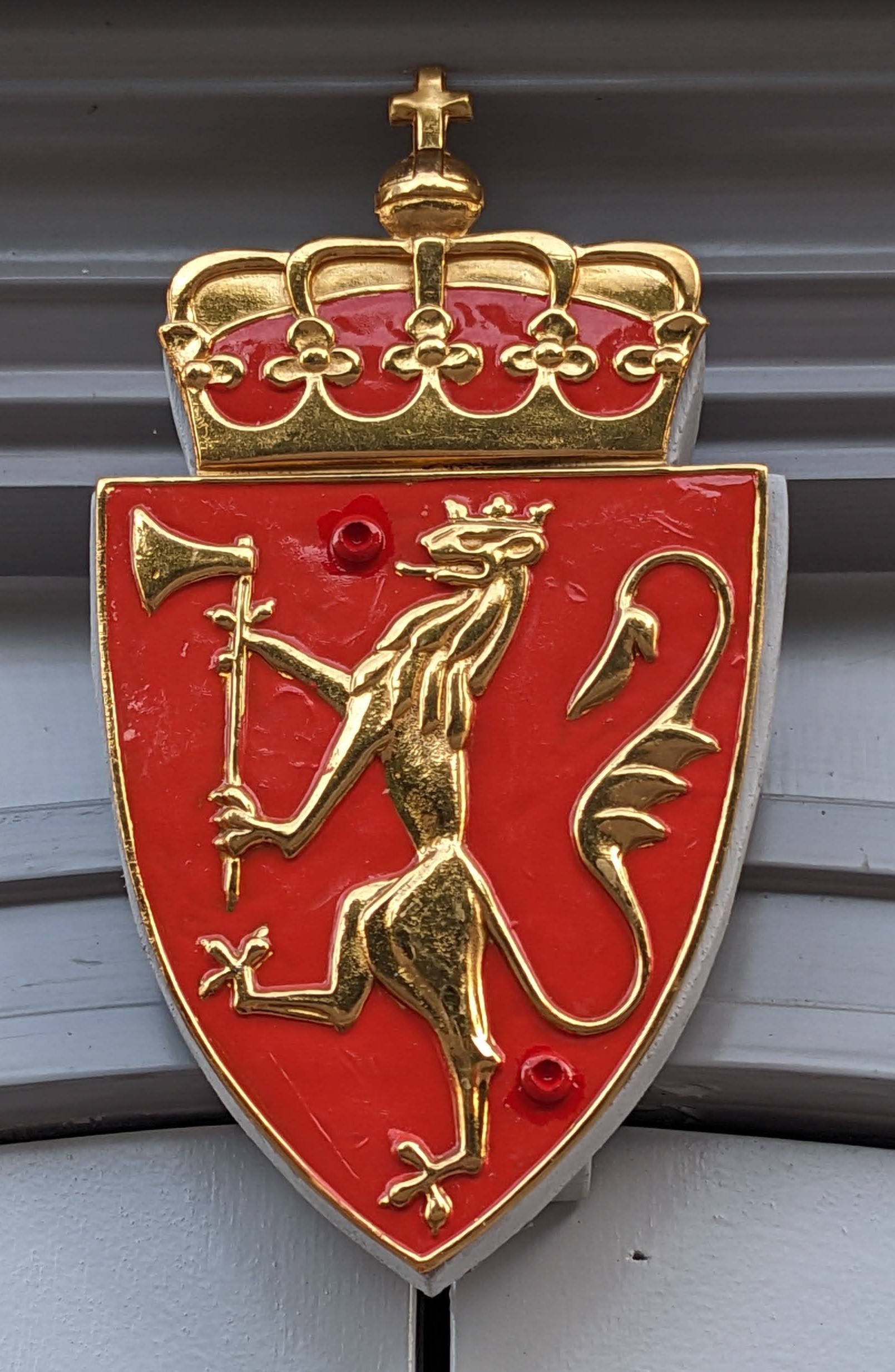 Norway Coat of Arms |
 Christian IV king of Denmark and Norway (1588–1648) |
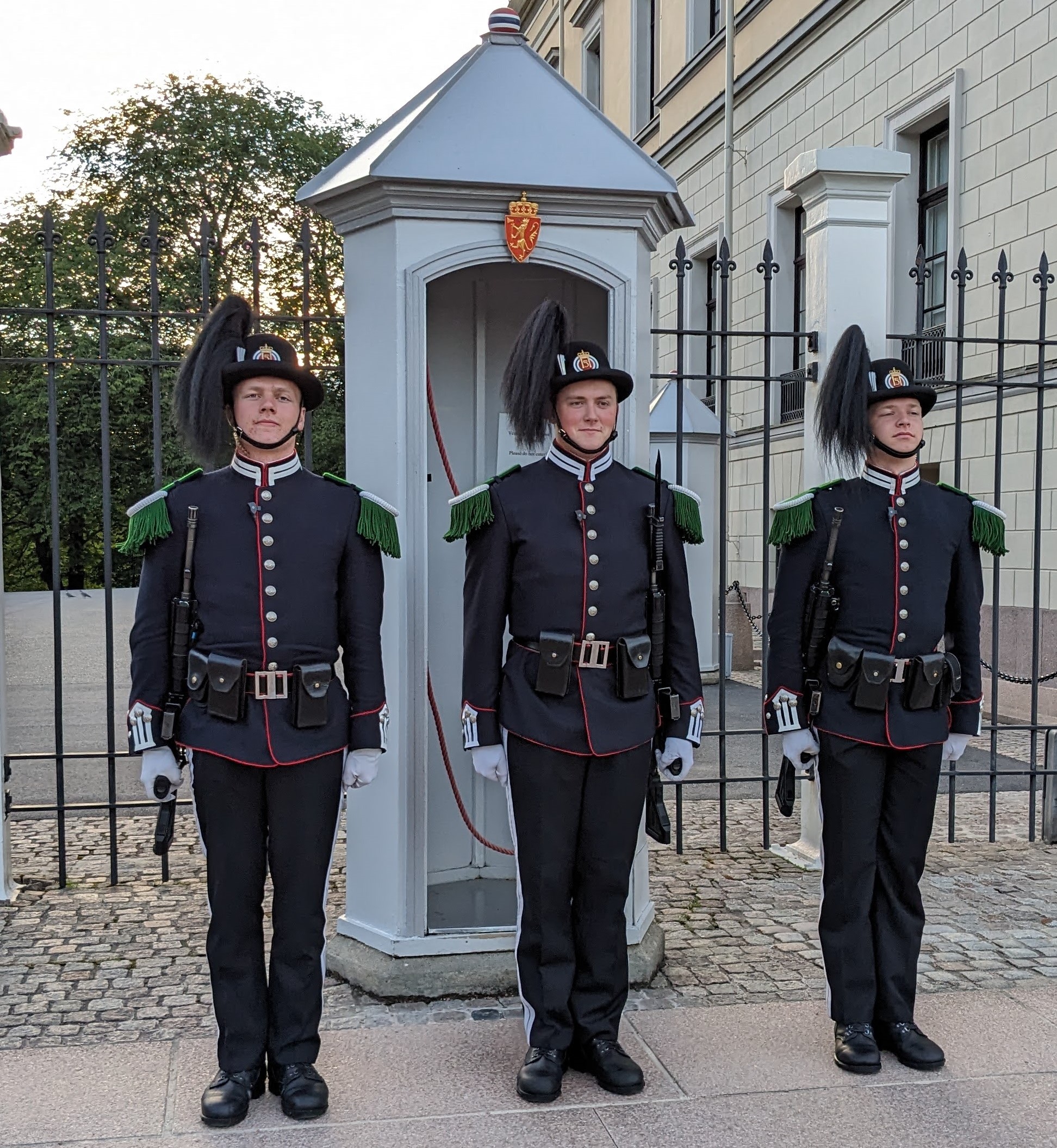 These Royal Palace guards were talking and laughing with each other when Nancy approached to ask if she could take their picture, but decided they’d better straighten up for the photo |
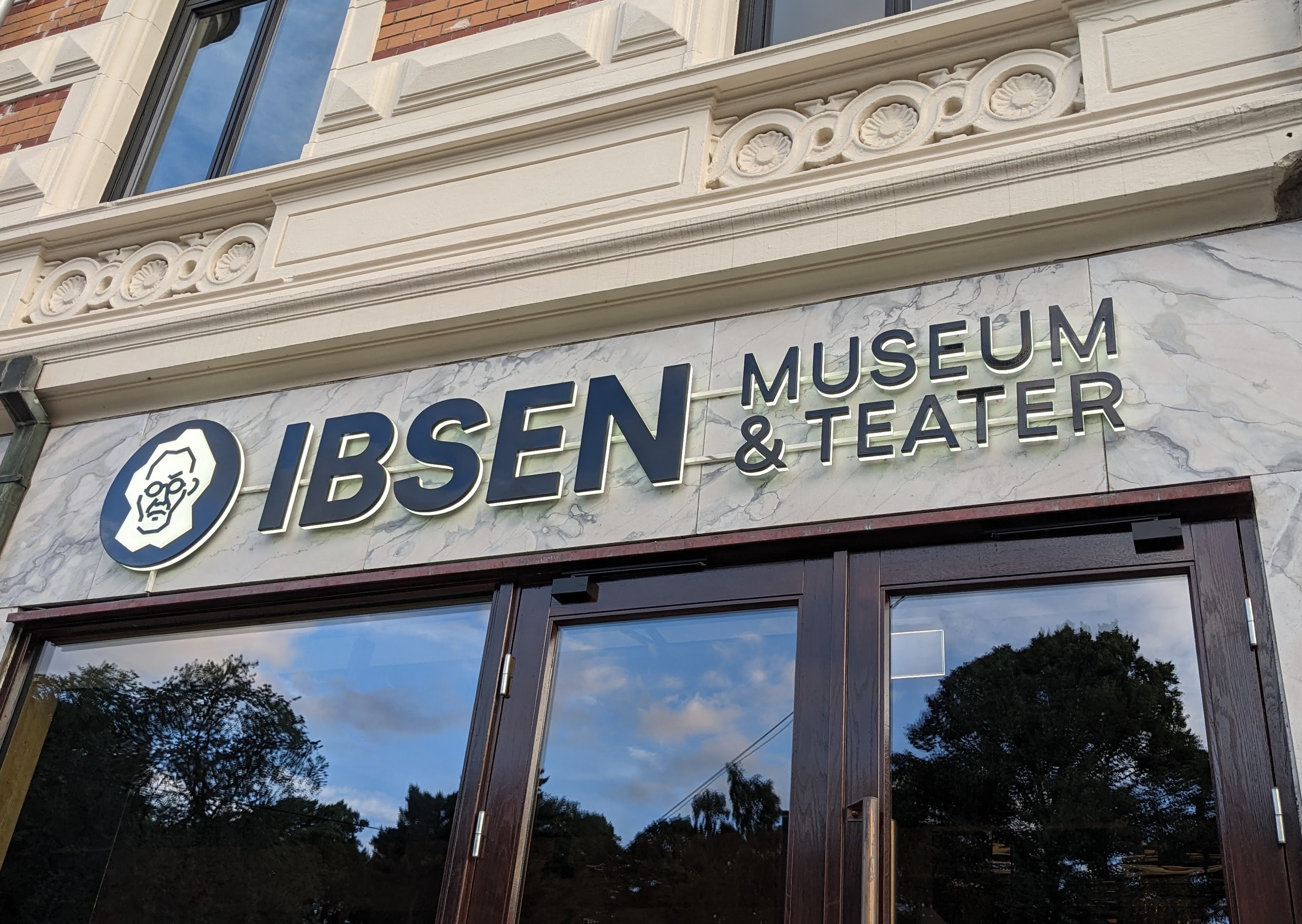 Henrik Ibsen’s last home is now a museum |
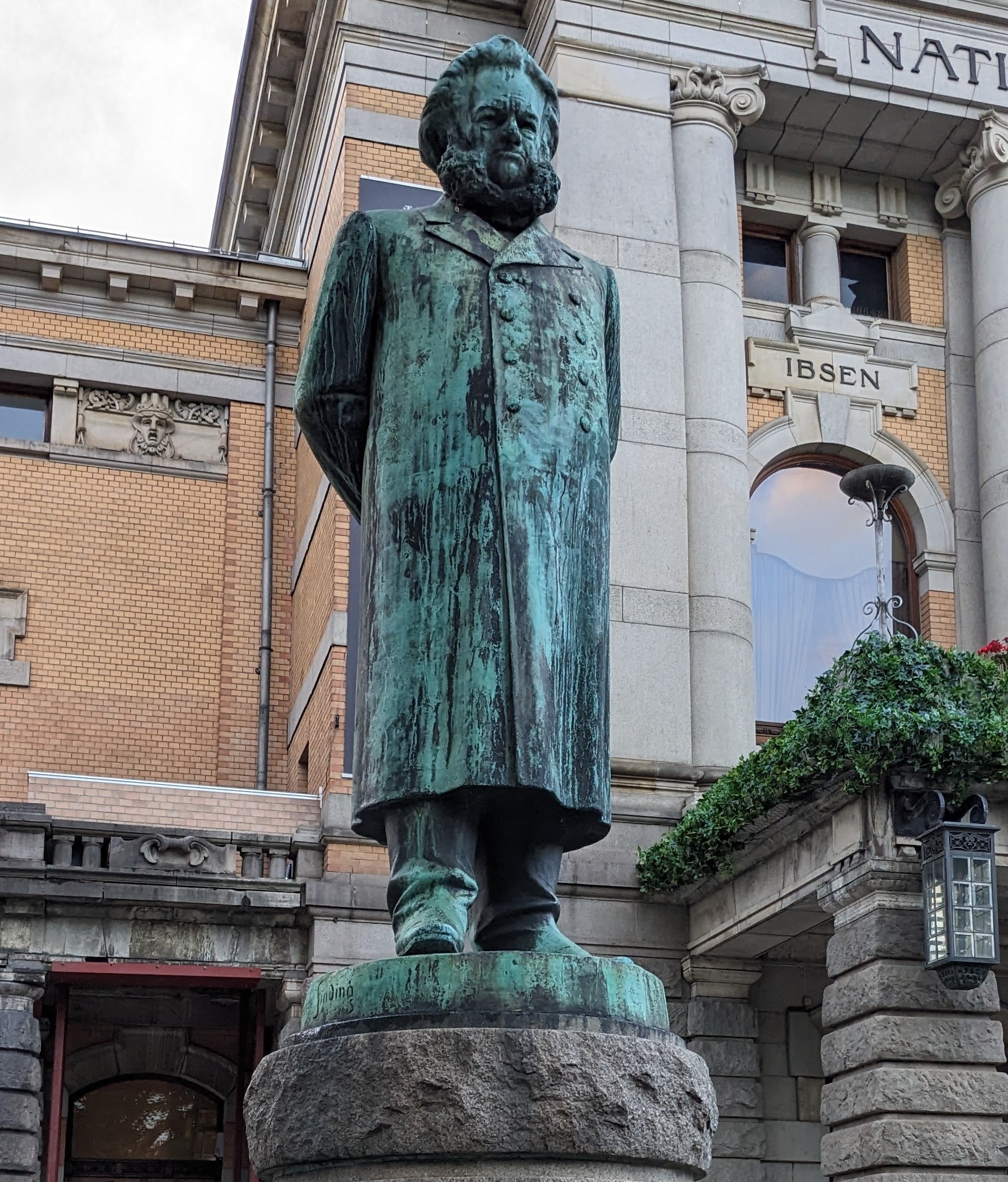 Henrik Ibsen by Stephan Sinding, 1899 |
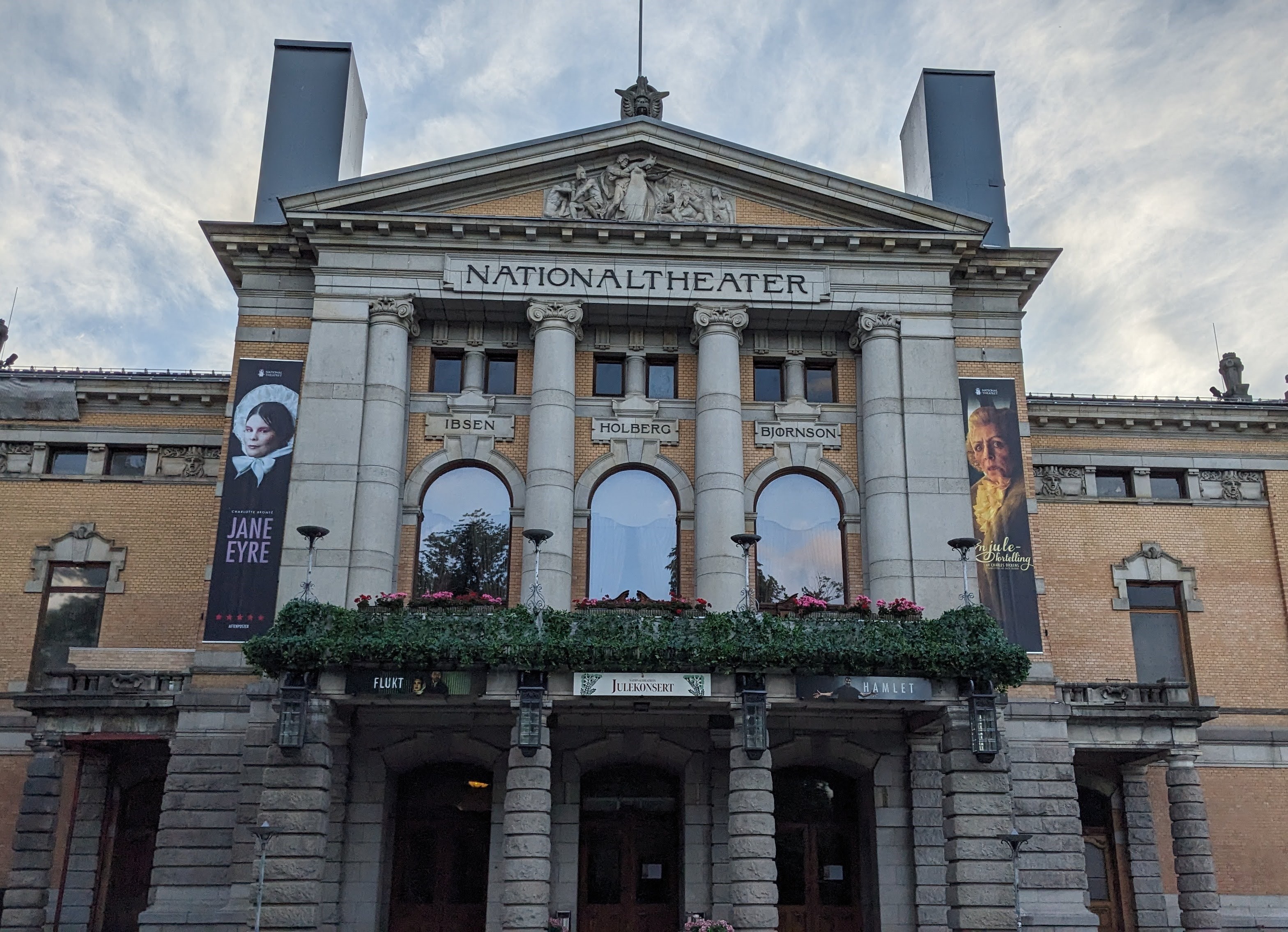 National Theater |
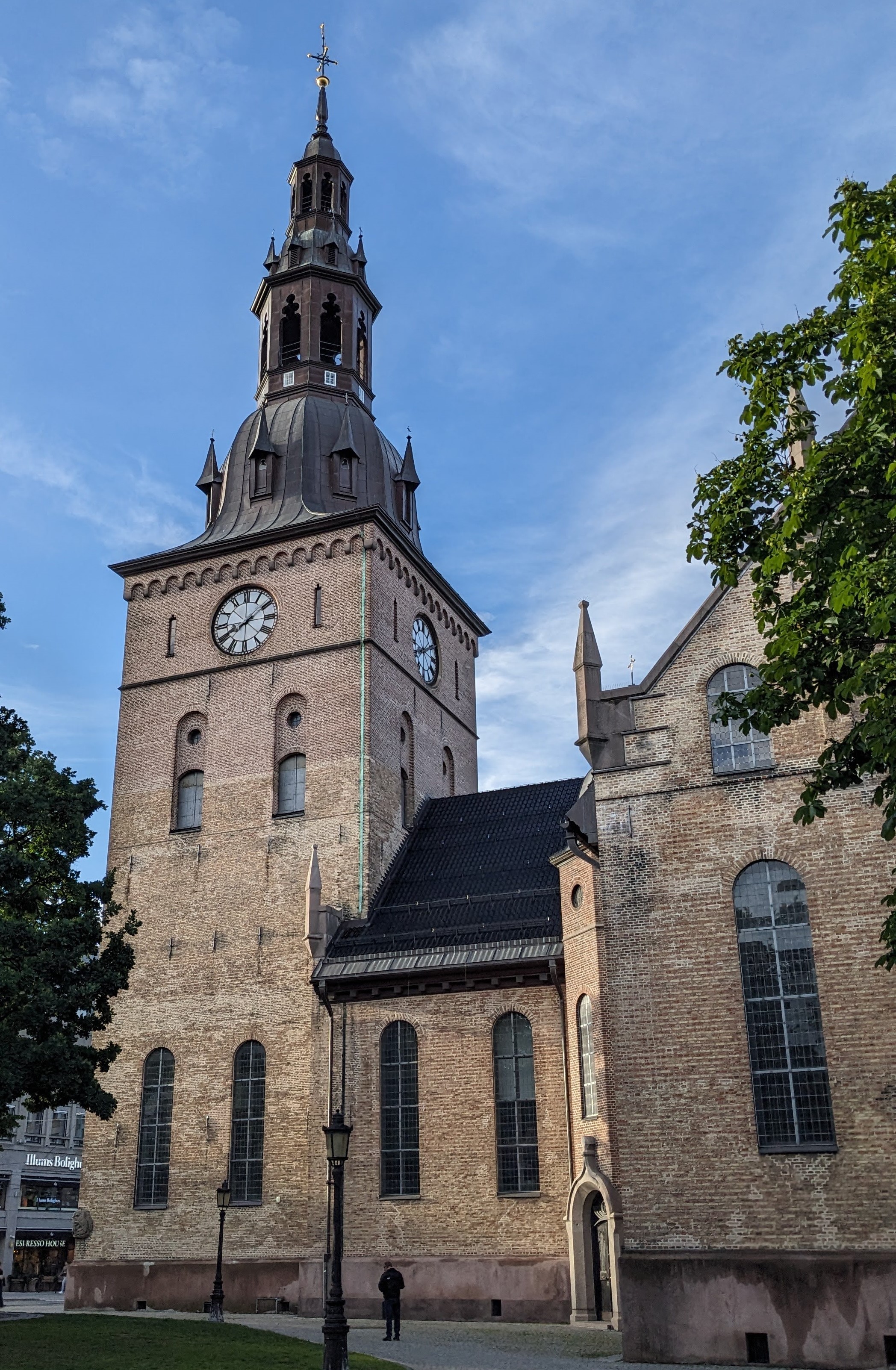 Oslo Domkirke |
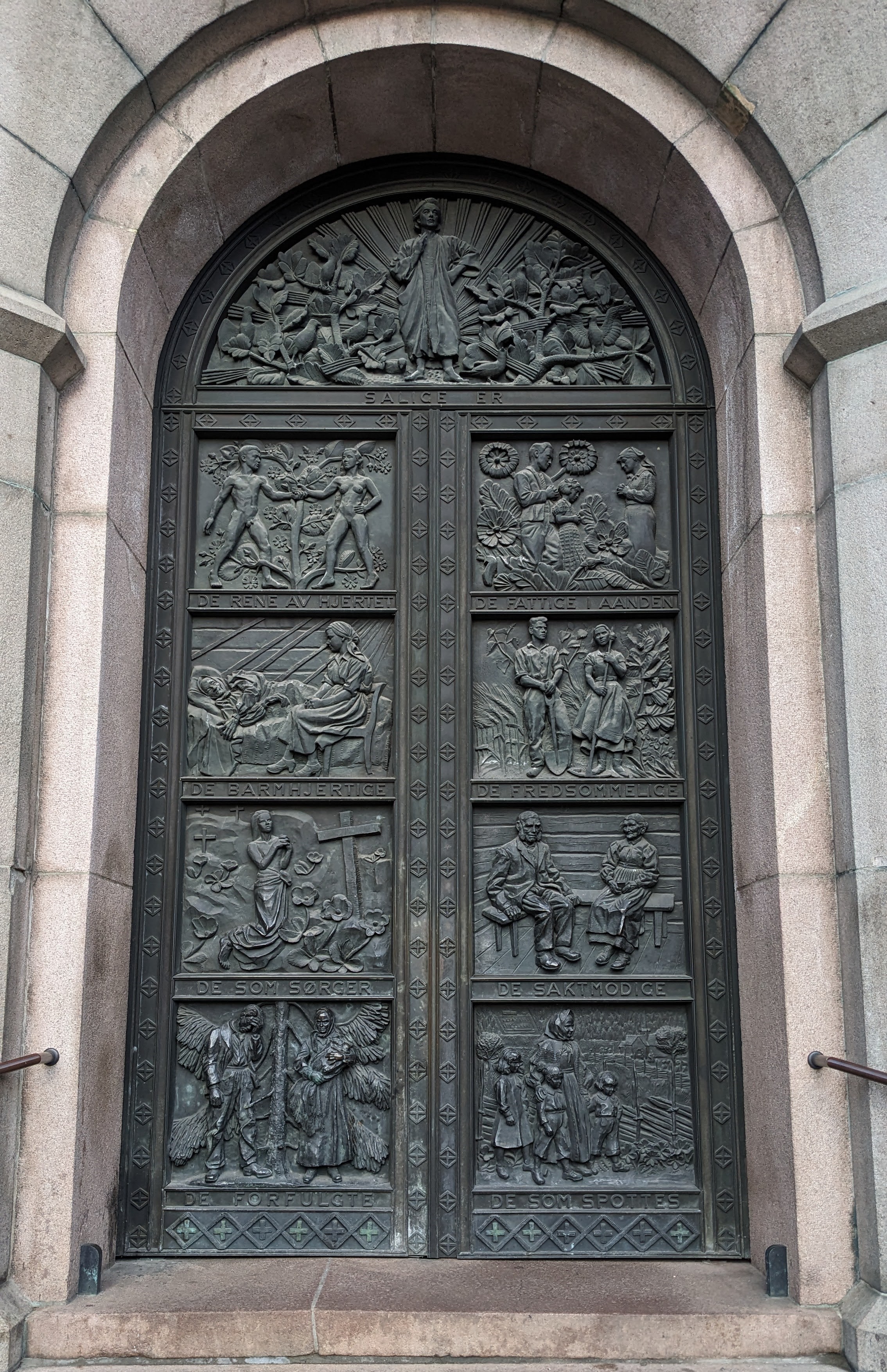 The bronze doors of Oslo’s Domkirke depict scenes from the Sermon on the Mount. They were created by Dagfinn Werenskiold in 1937 |
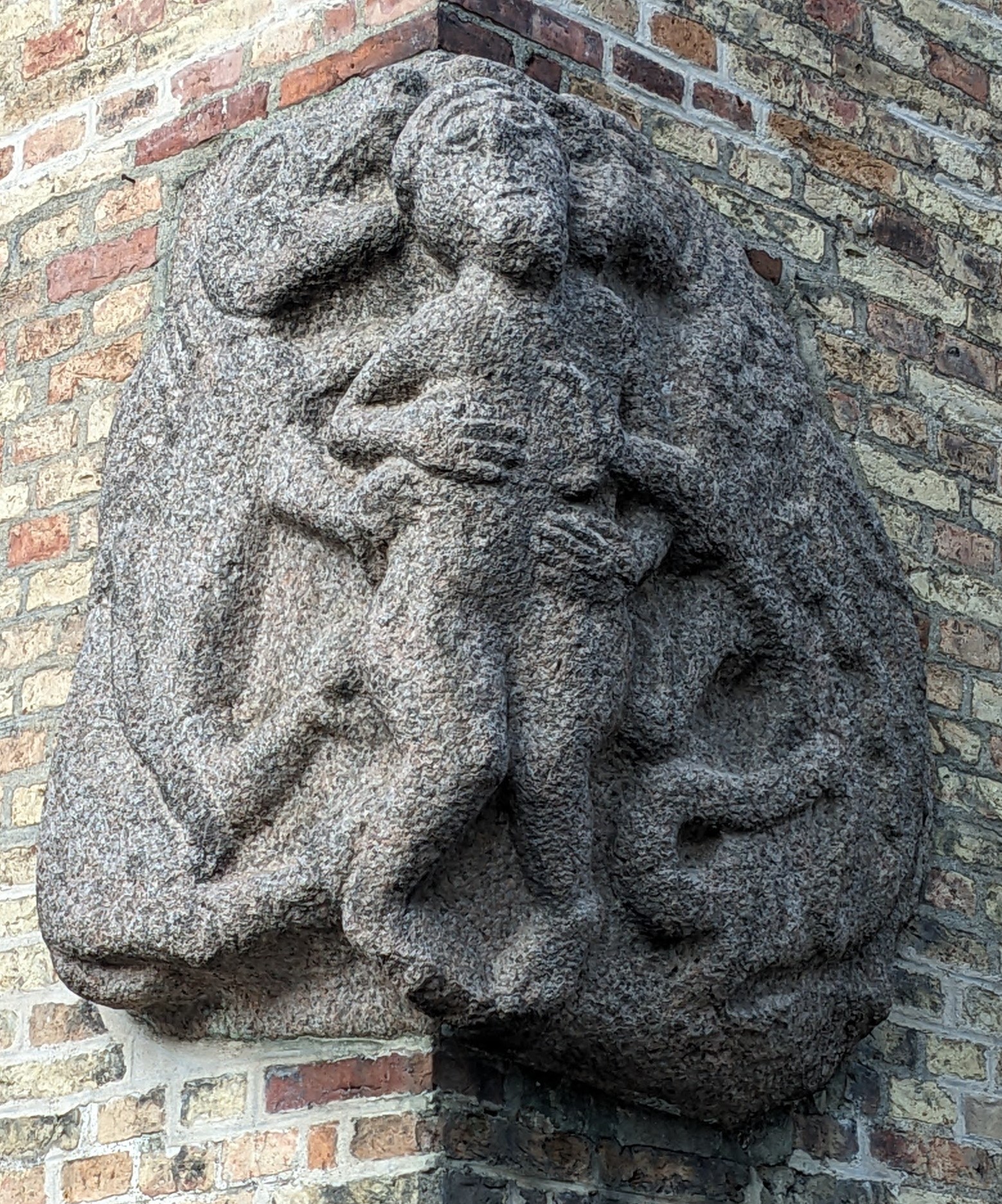 The 900-year-old “Devil of Oslo” was found among the ruins of St. Hallvard’s, Oslo’s original cathedral. Now it decorates a corner of the Domkirke |
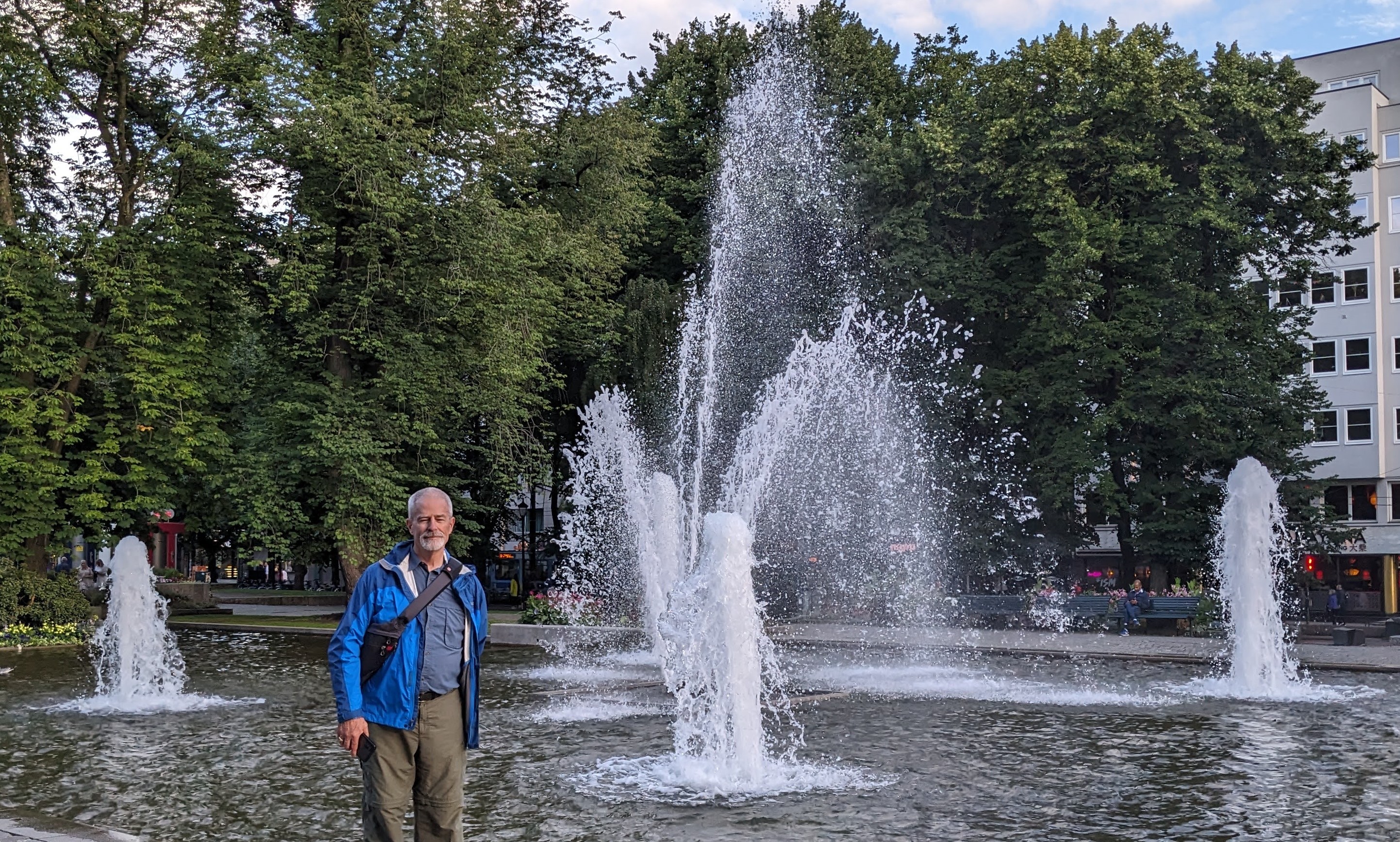 Michael in a park near Parliament |
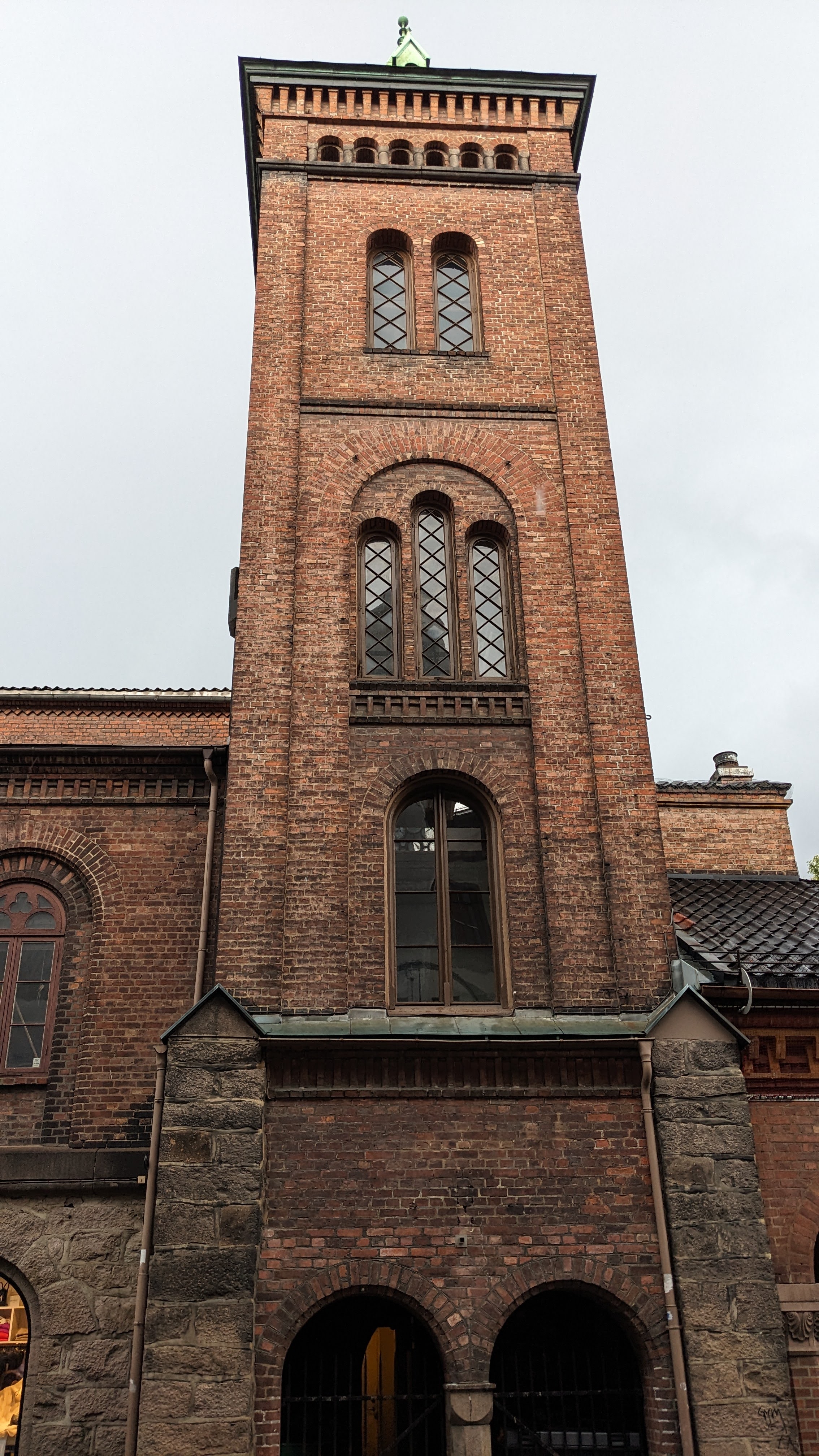 Old Oslo fire station |
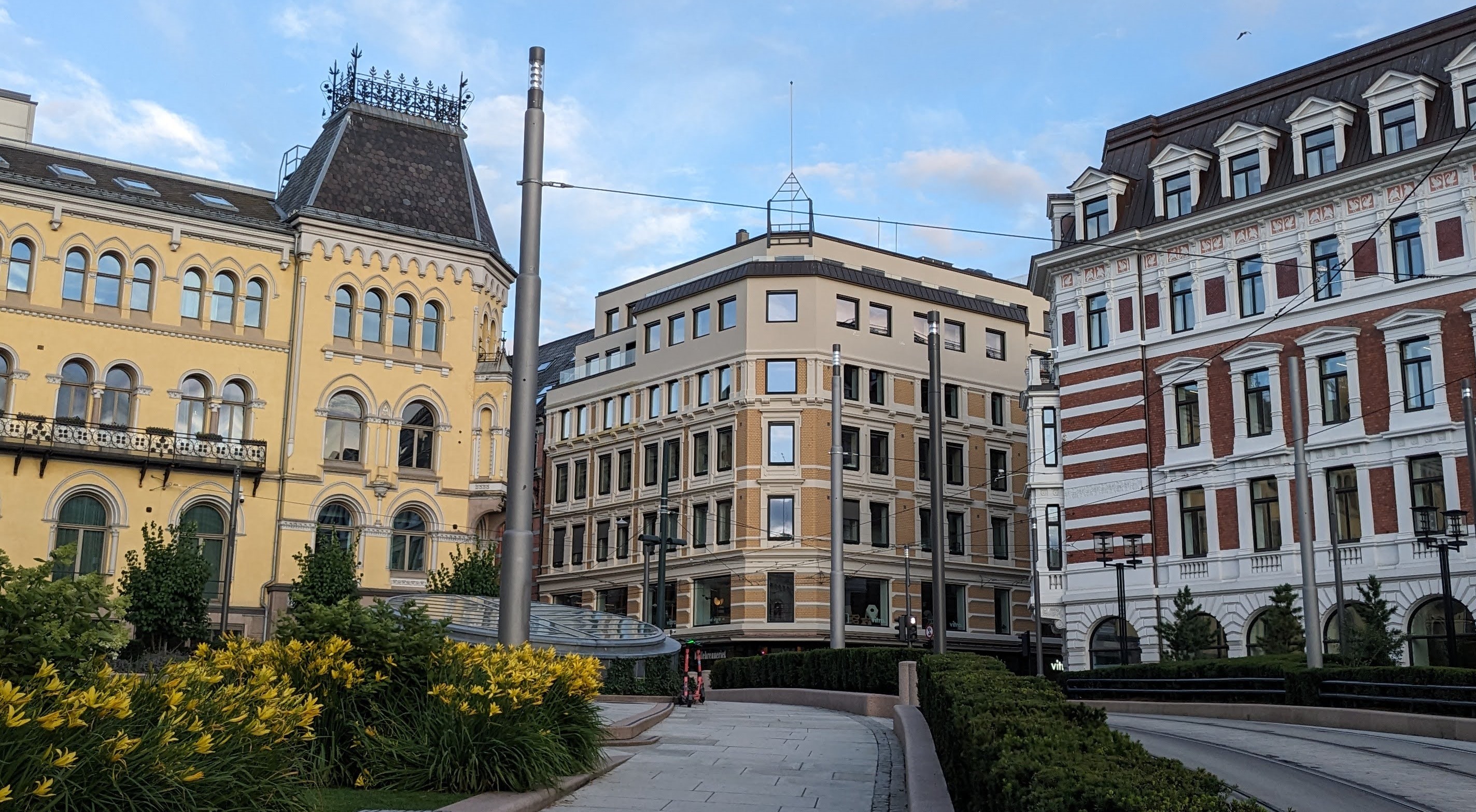 Intersection of Prinsens gate and Akersgata behind Parliament in central Oslo |
The sun was still a long way from setting when we headed back to the hotel about 9:30 p.m. Before we went to bed, we packed essentials and a change of clothes into our daypacks and prepared our larger luggage to go into a locker at the train station the next morning.
Norway is on my list of places I have never been to. Hope to make it there someday. Just this last weekend John managed to take a less hideous passport photo of me than the one I got at AAA a few months ago, so that is progress!
What a great concept – hop-on-hop-off country tours! Thanks as always for a peek at your adventures.
When we visited Norway in 2018 we started in Bergen, stayed there for several days, and then drove a rental over the mountains to Oslo. We also went to Lillehammer where there is a statute of my great, great, great uncle on the grounds of a church. He left Norway and went to India and started a mission that has survived as a small religious sect. So we have clout in Lillehammer. We drove through Voss, but not sure the rest of the way was the same route you’re taking. When we travel, especially out of the US, we like like to drive so we can take random detours.
Nice post on Norway. Norway sounds quite similar to Denmark. My youngest son and family live in Tbilisi, Georgia, EU. I haven’t gone there and heard the language yet, but, the alphabet it very different from any other that I have seen. We enjoy your blog. Pam and Kevin
You two have become world travelers! How wonderful. We miss you both!